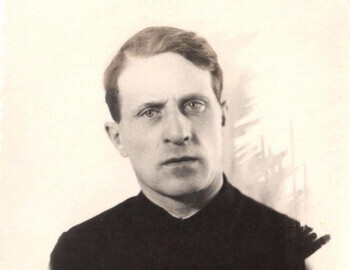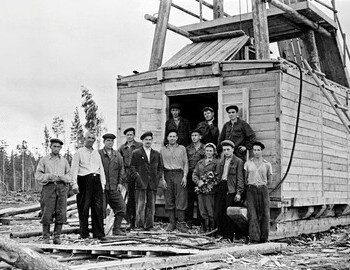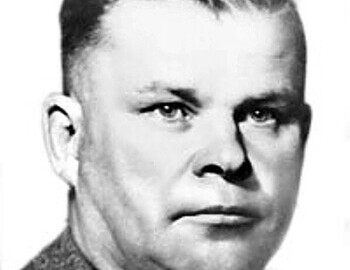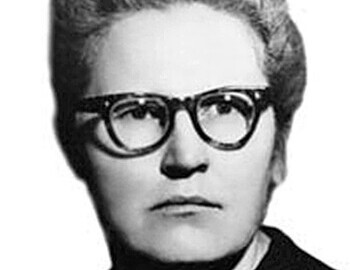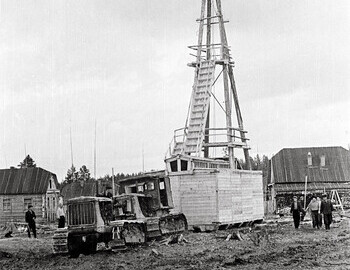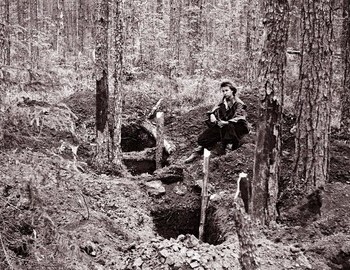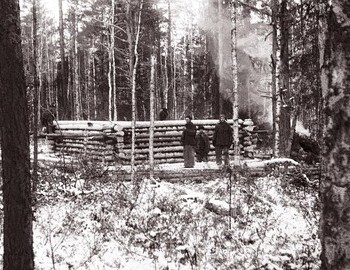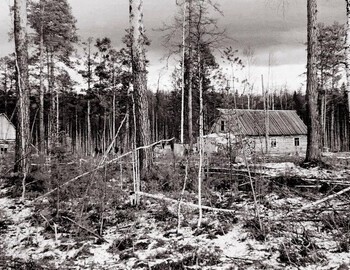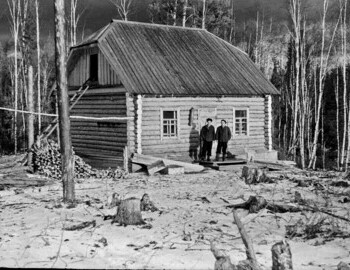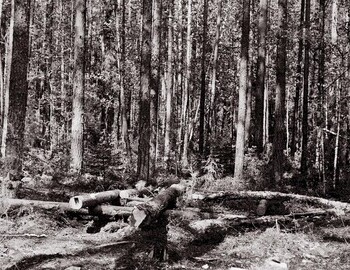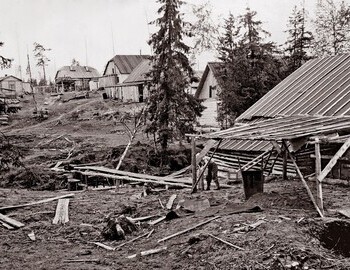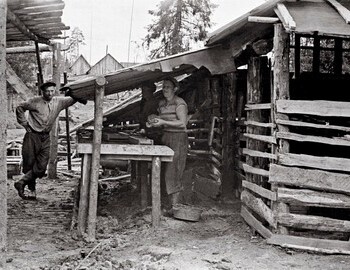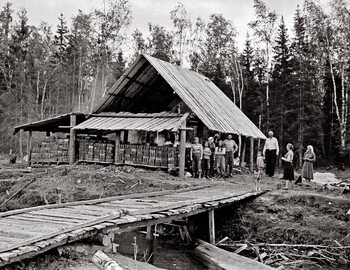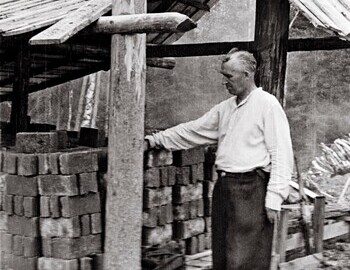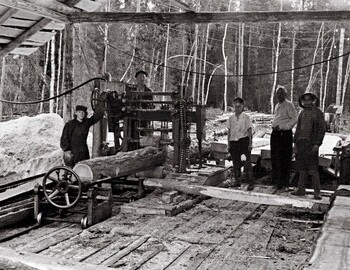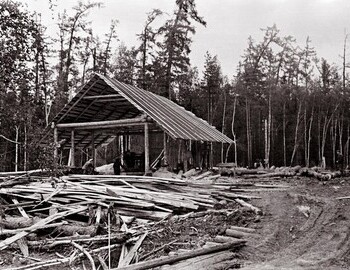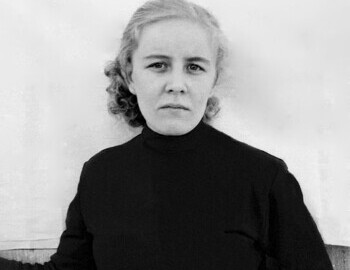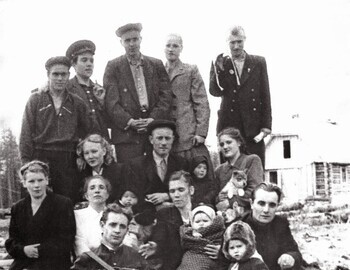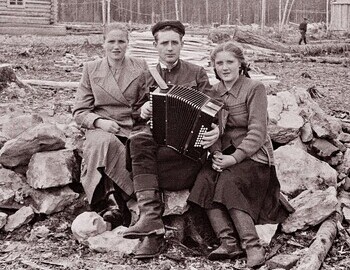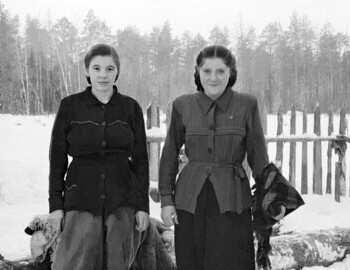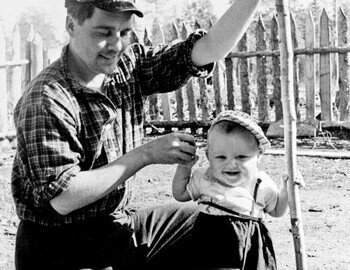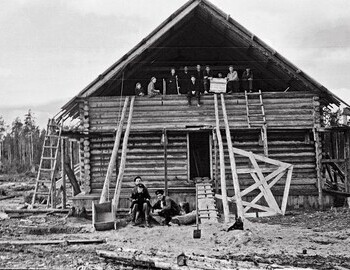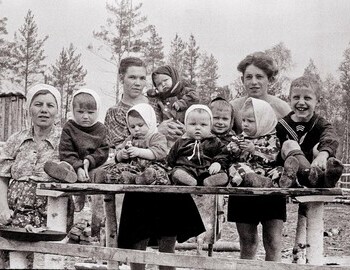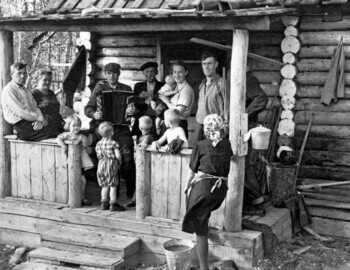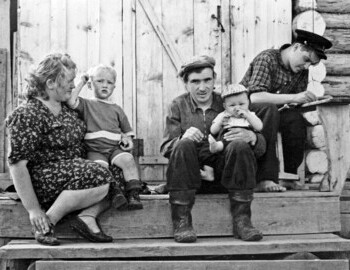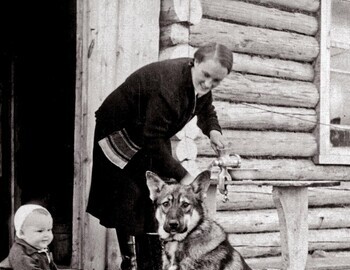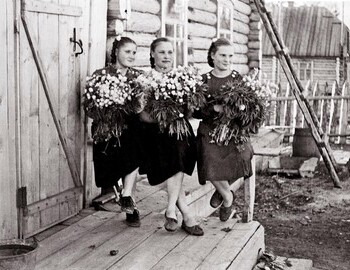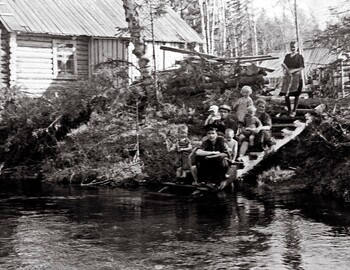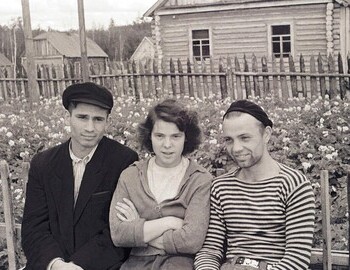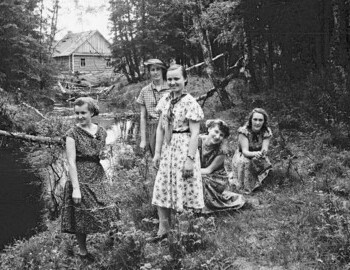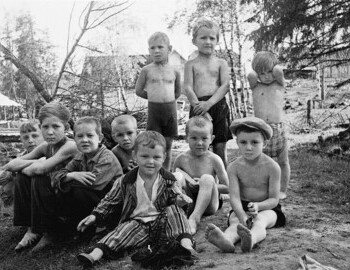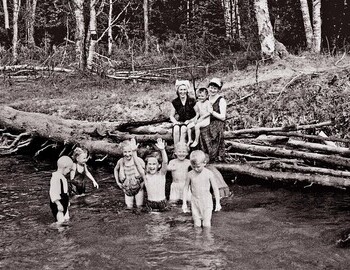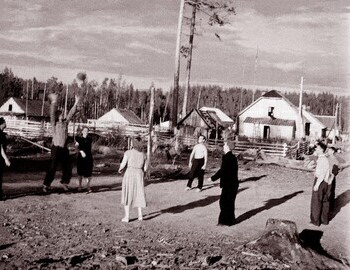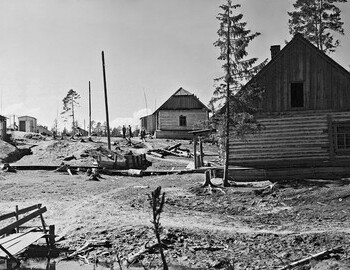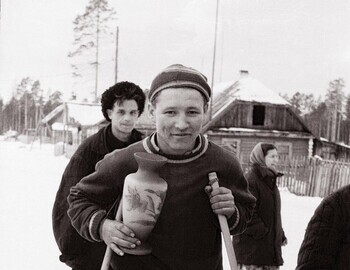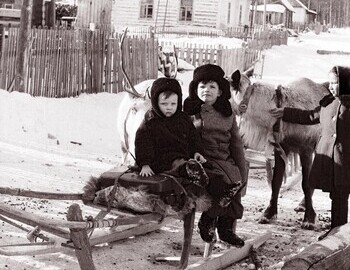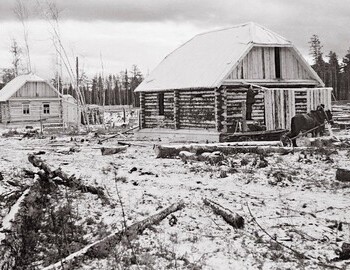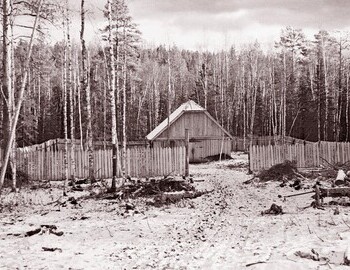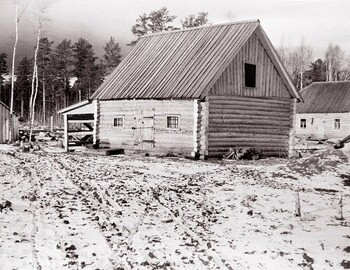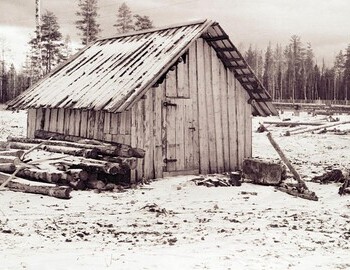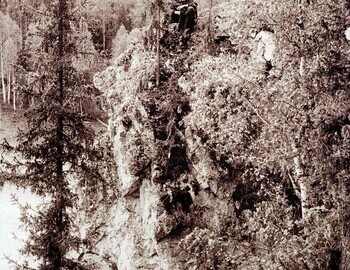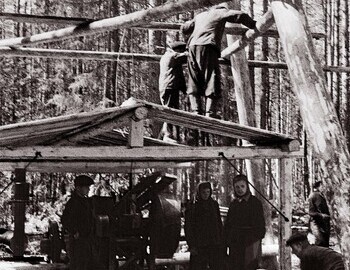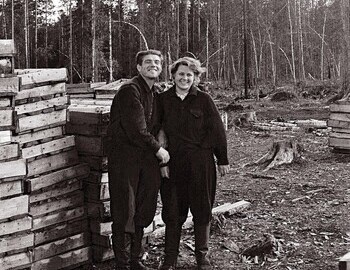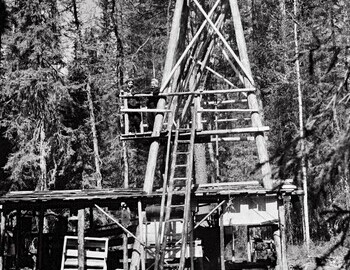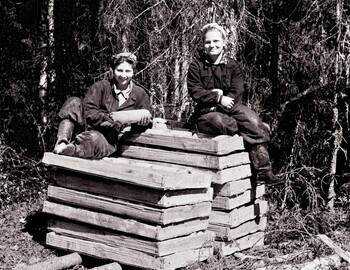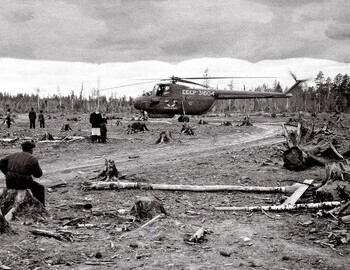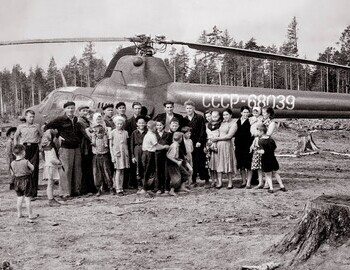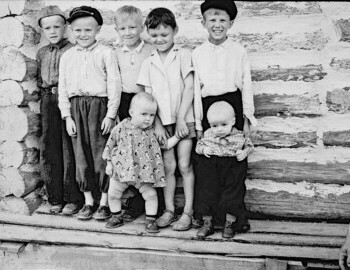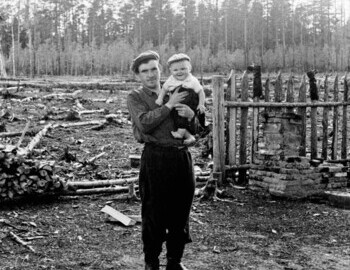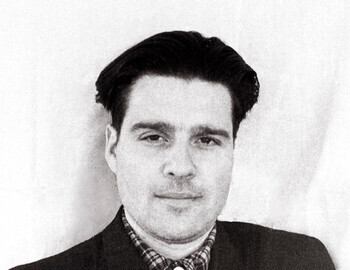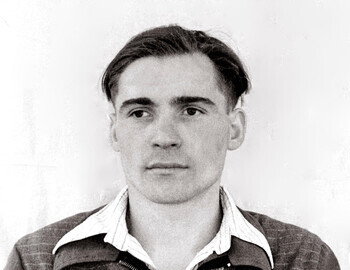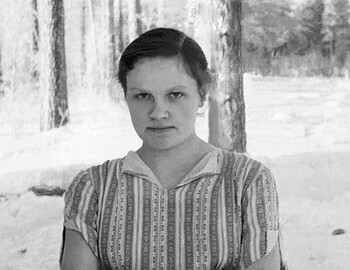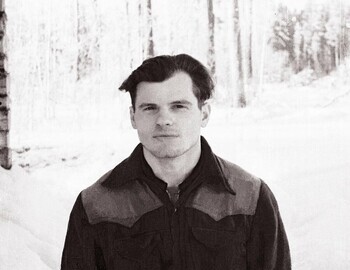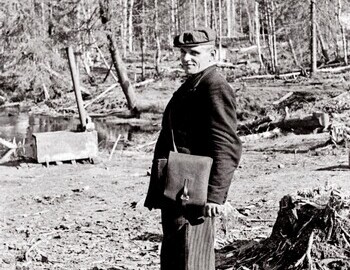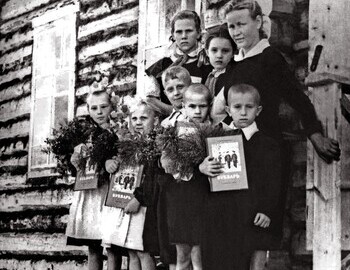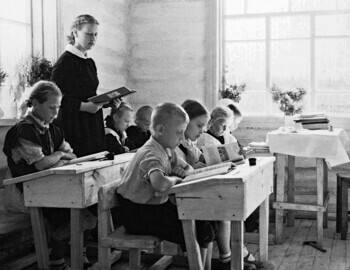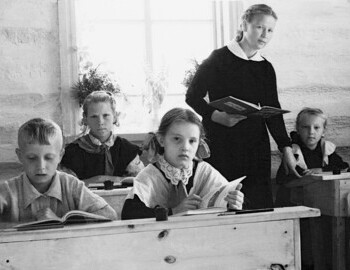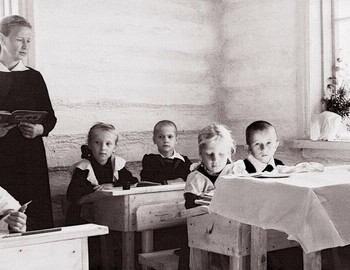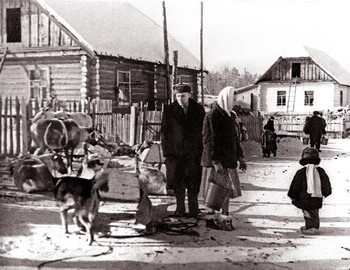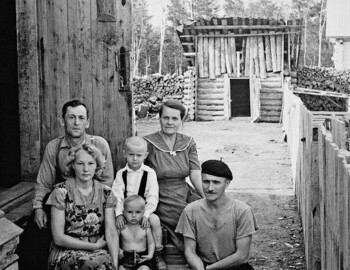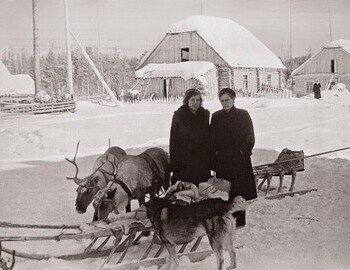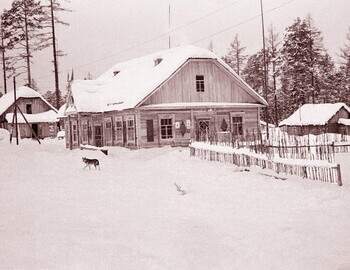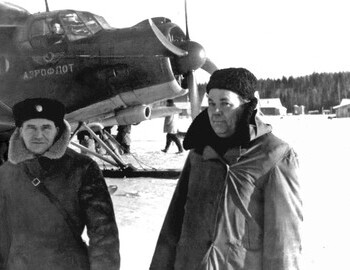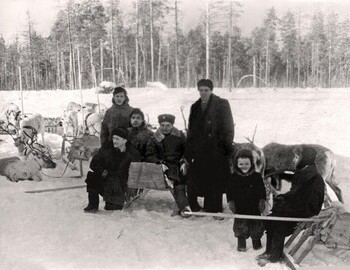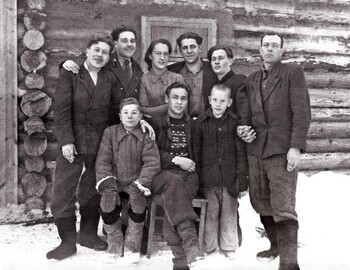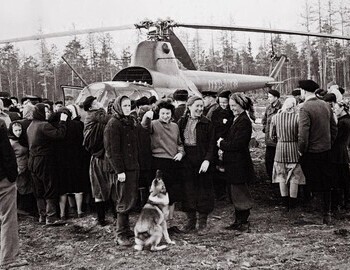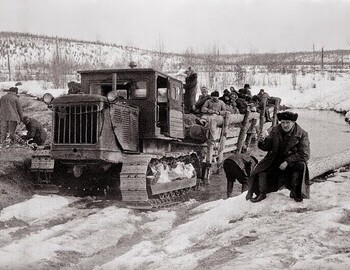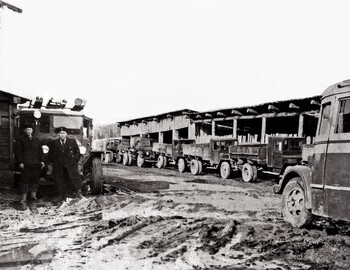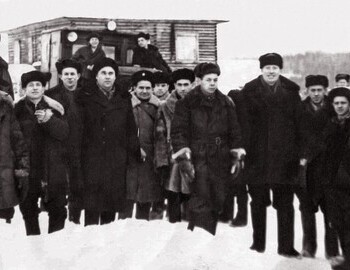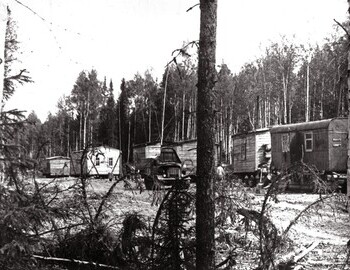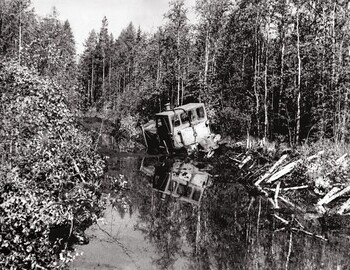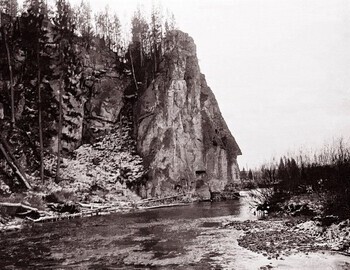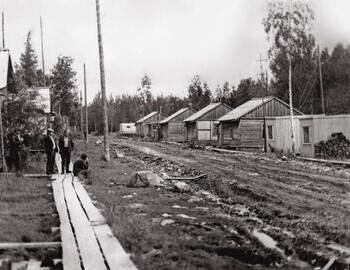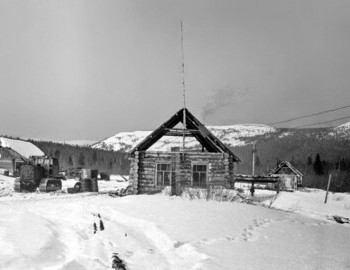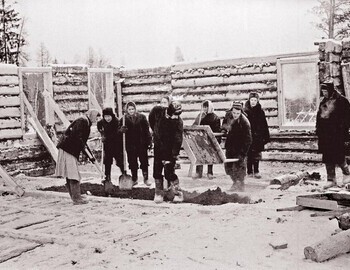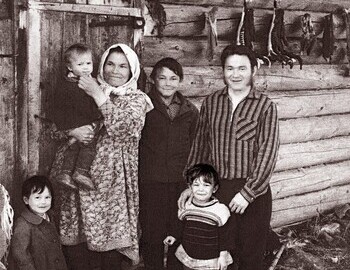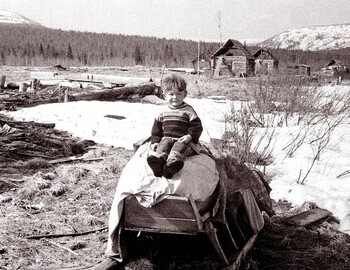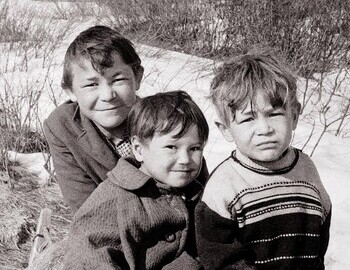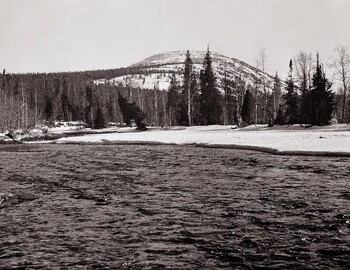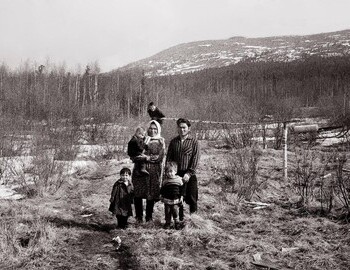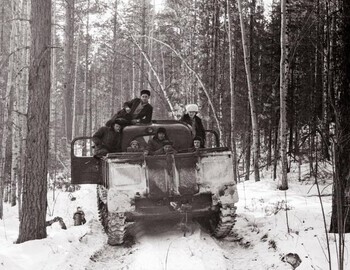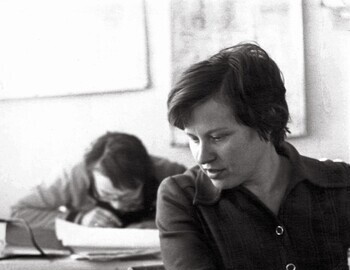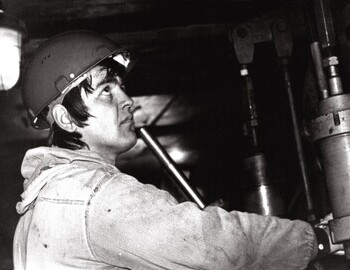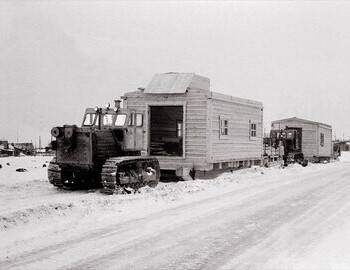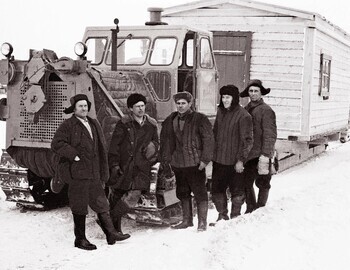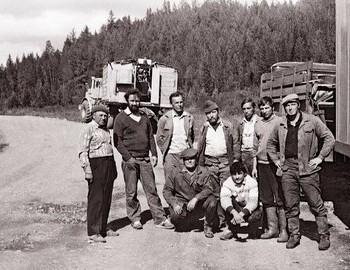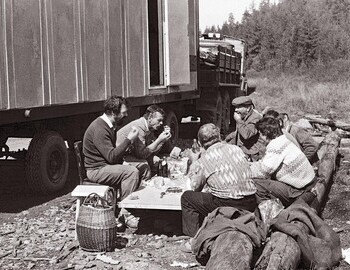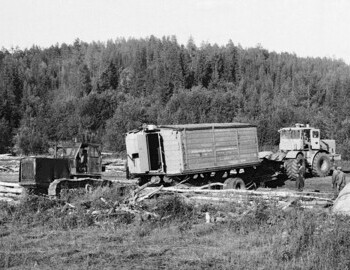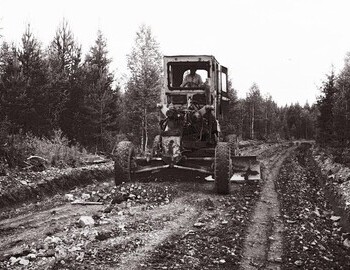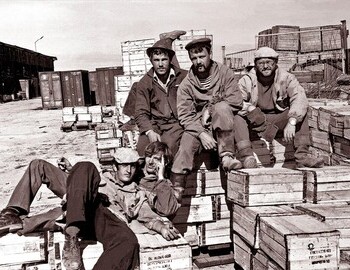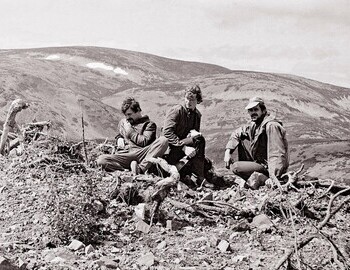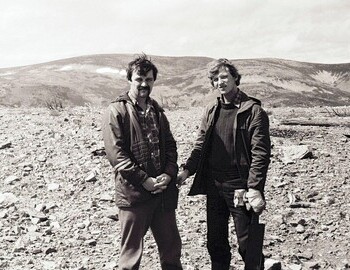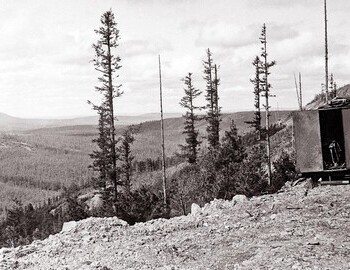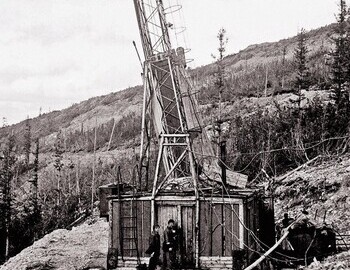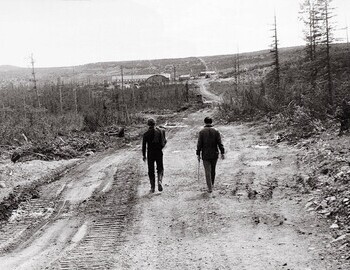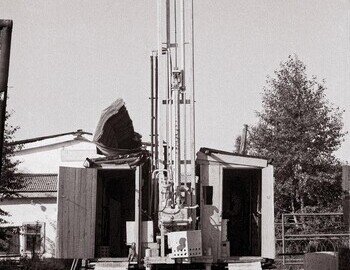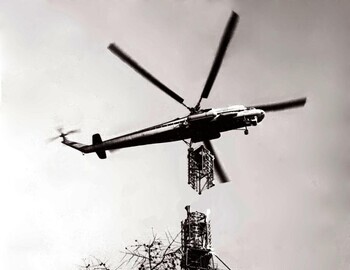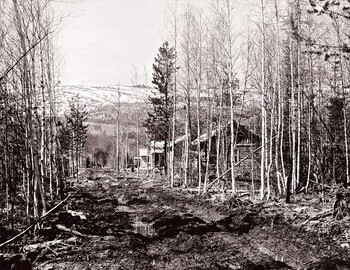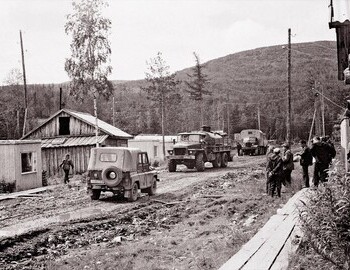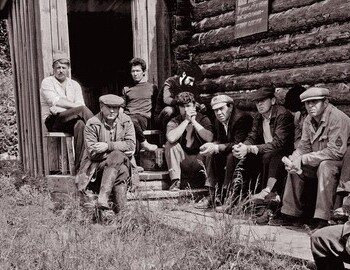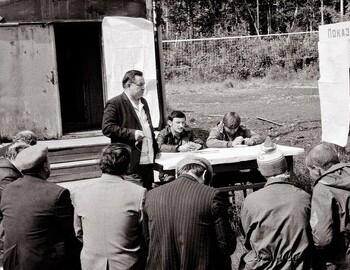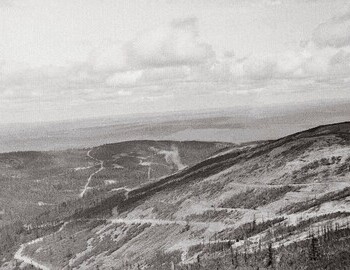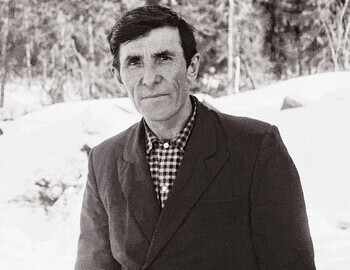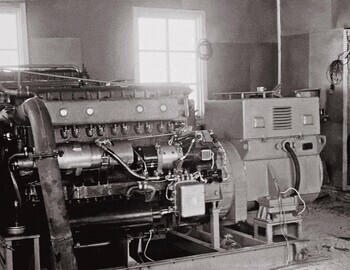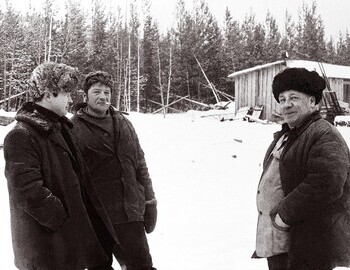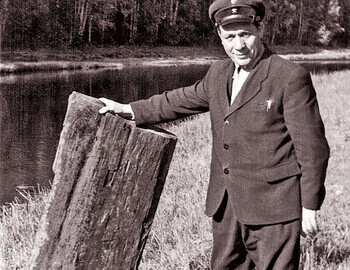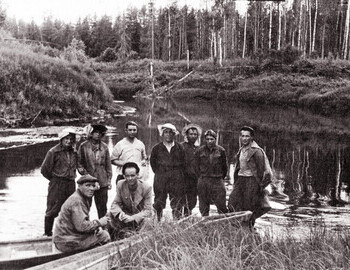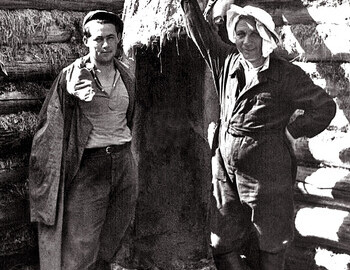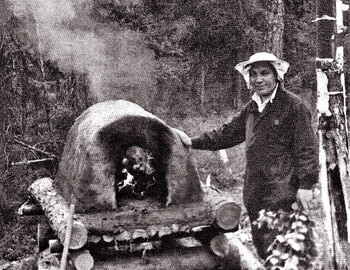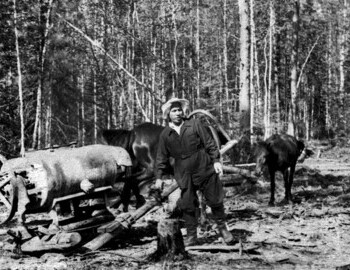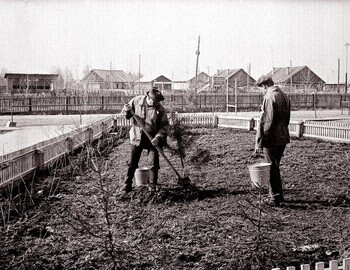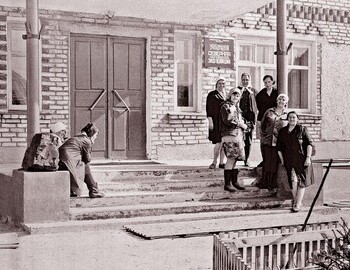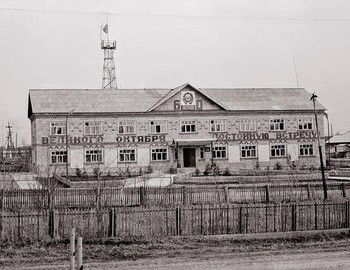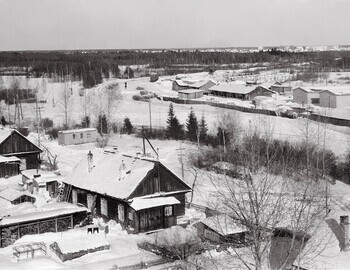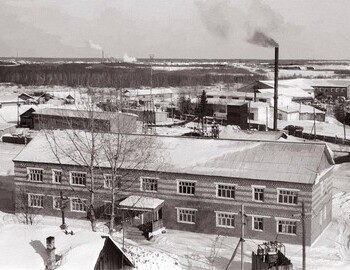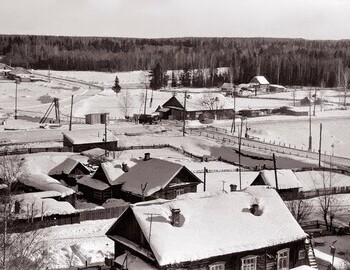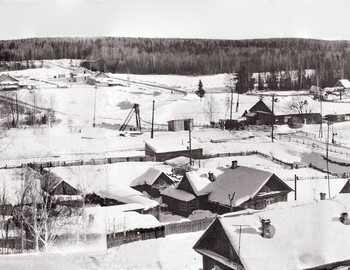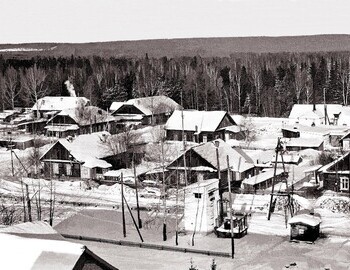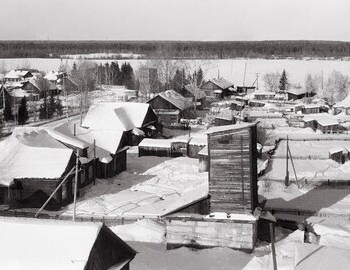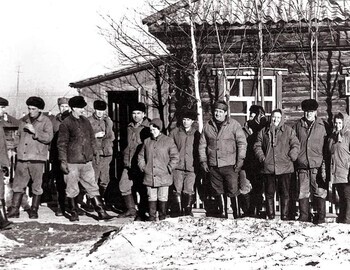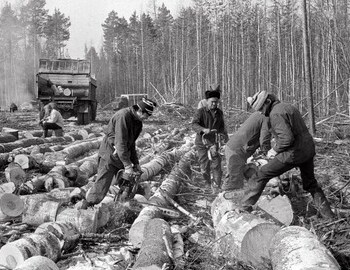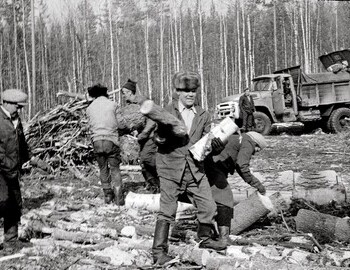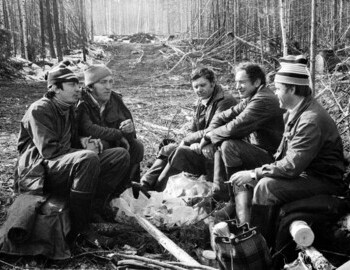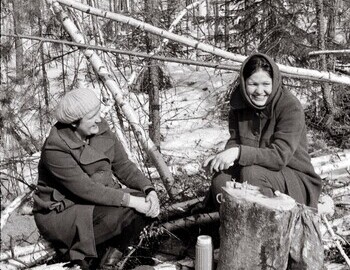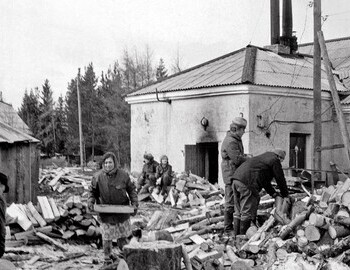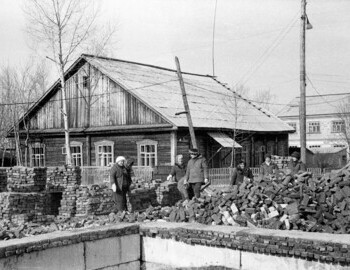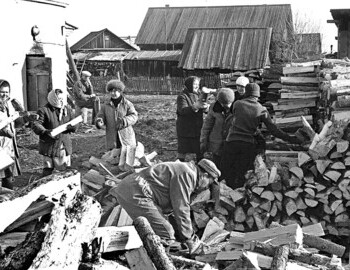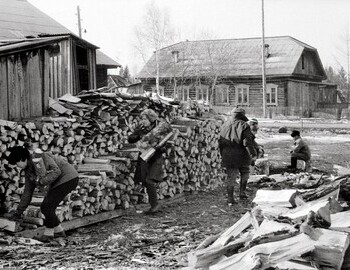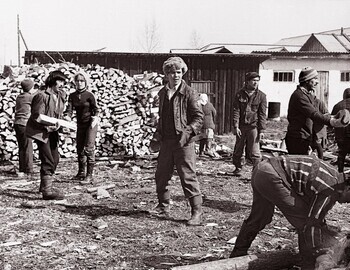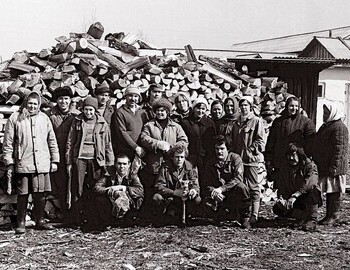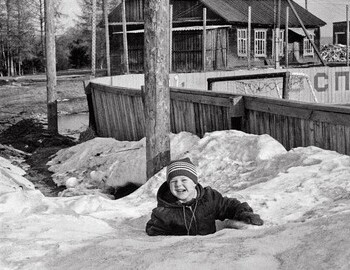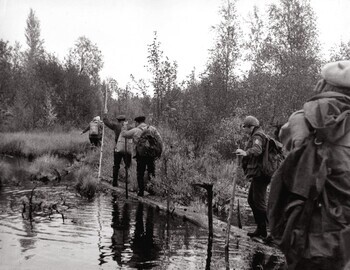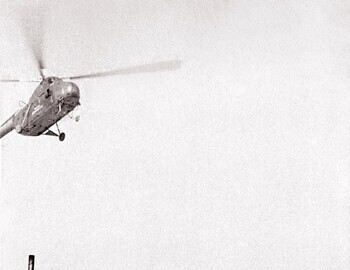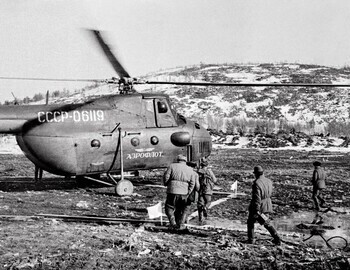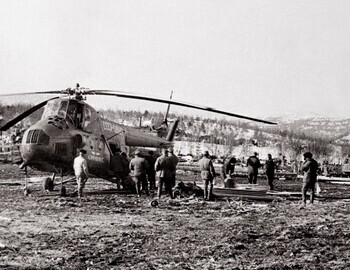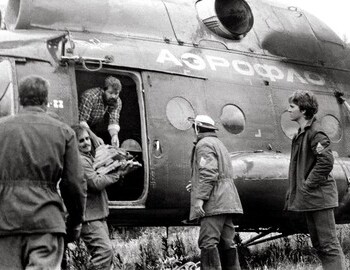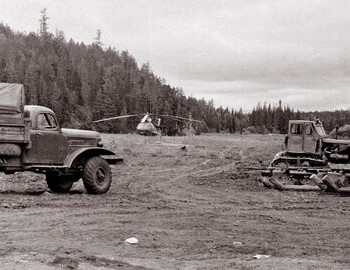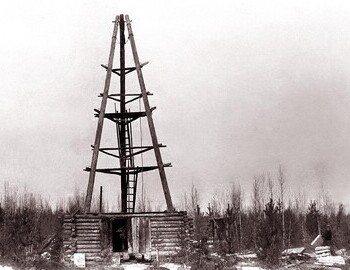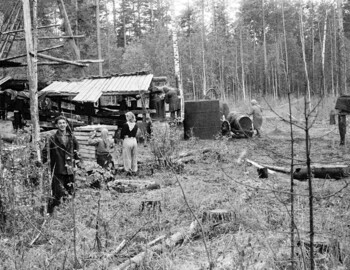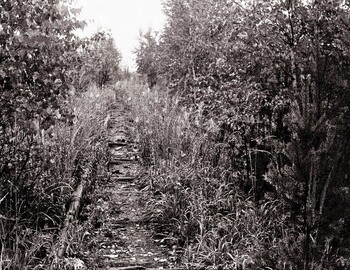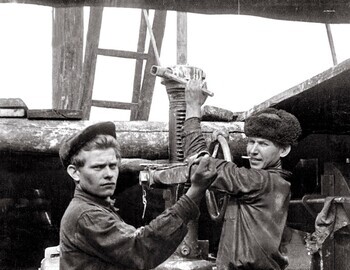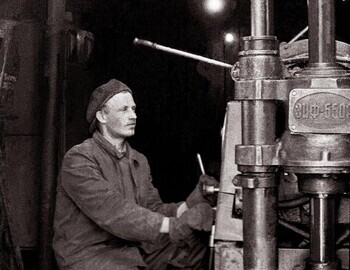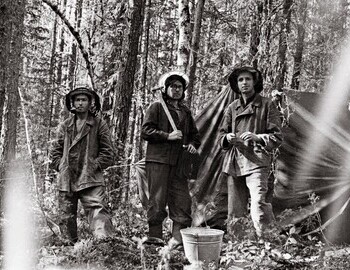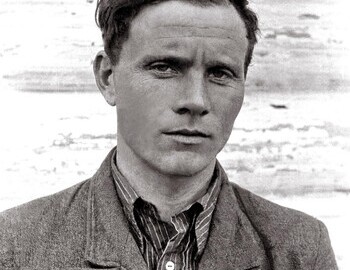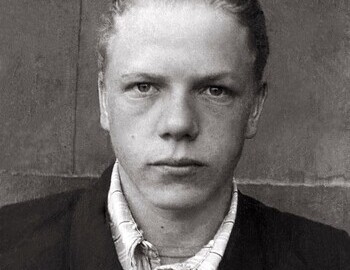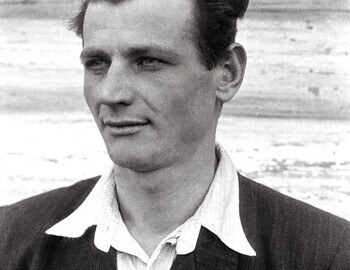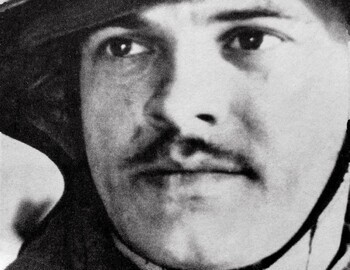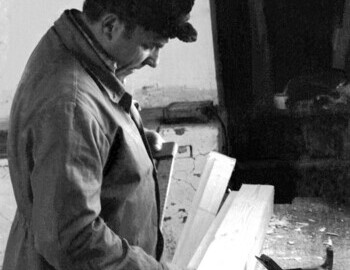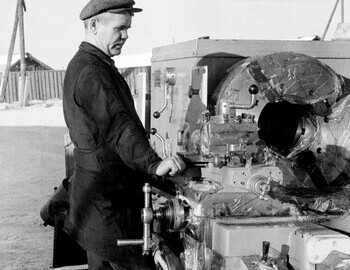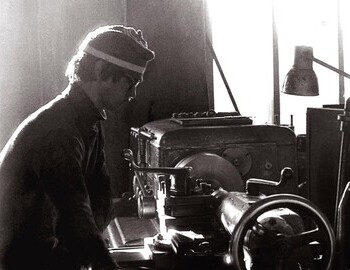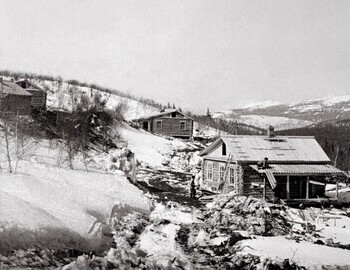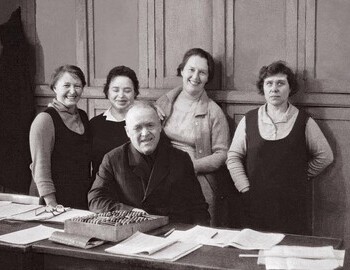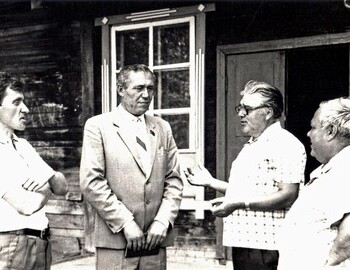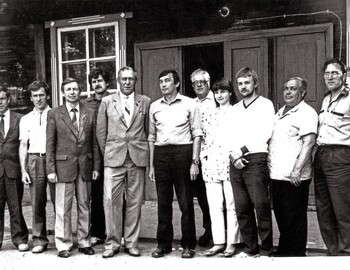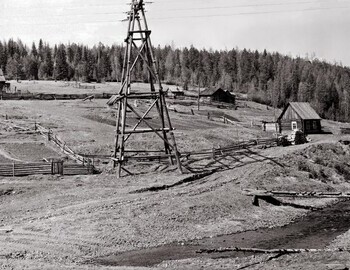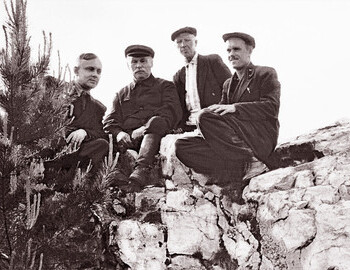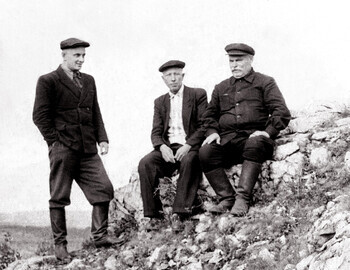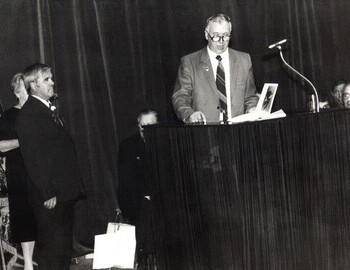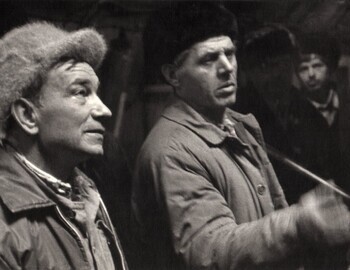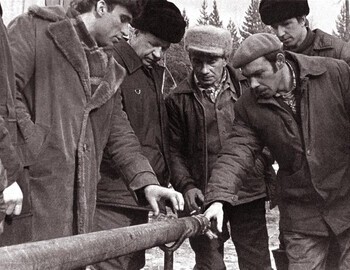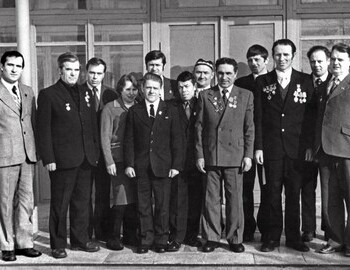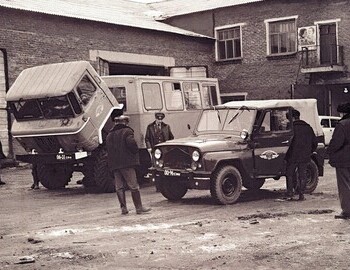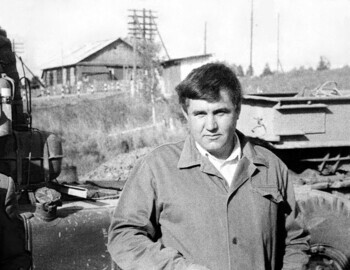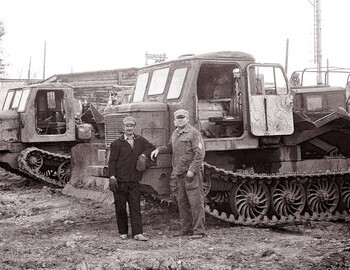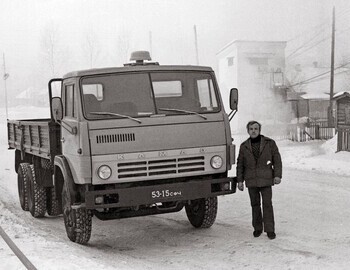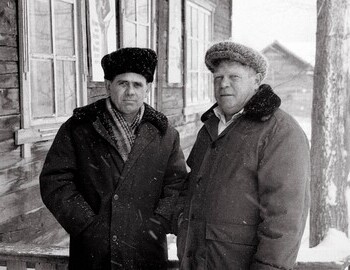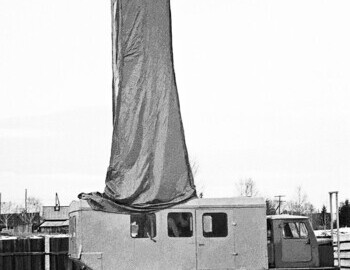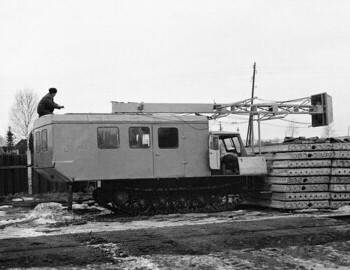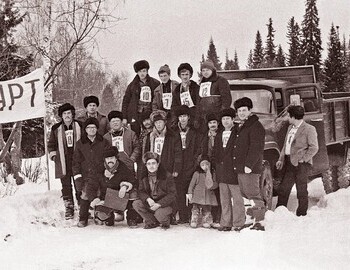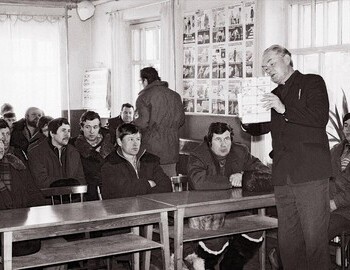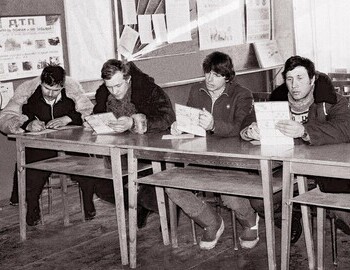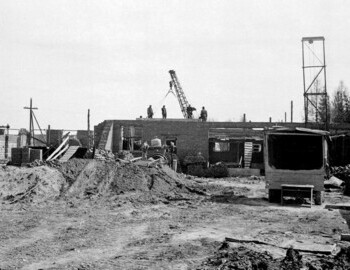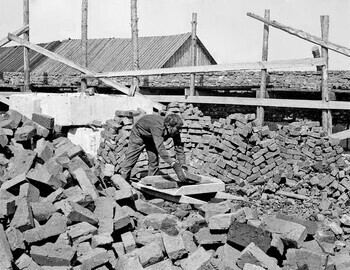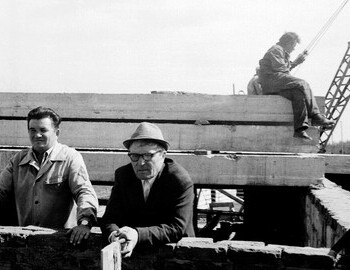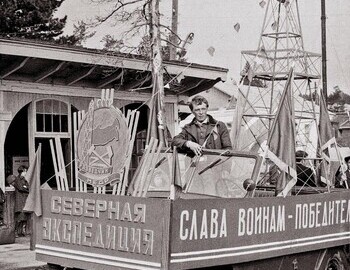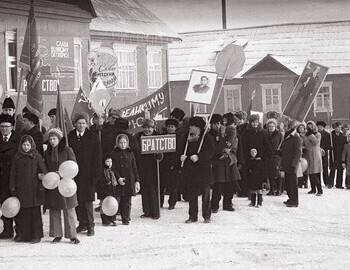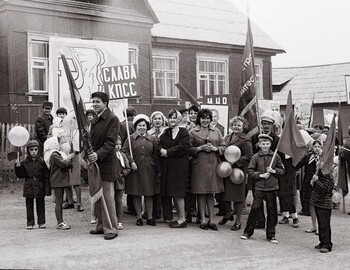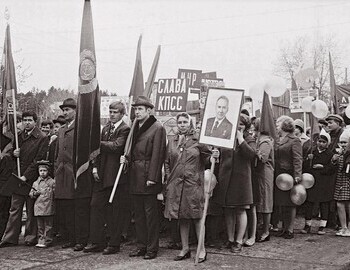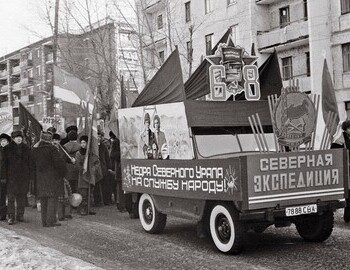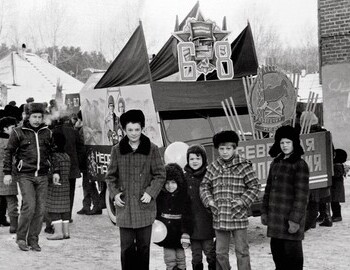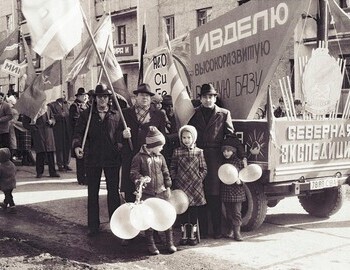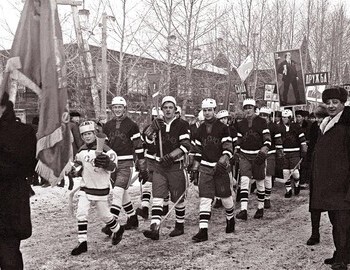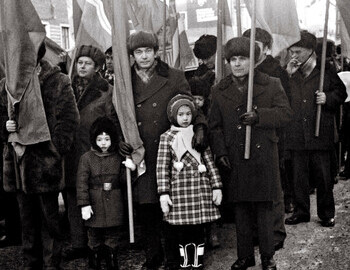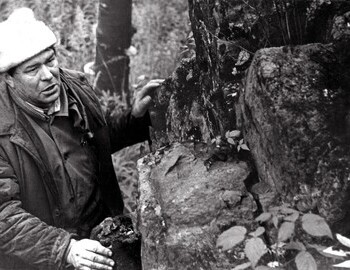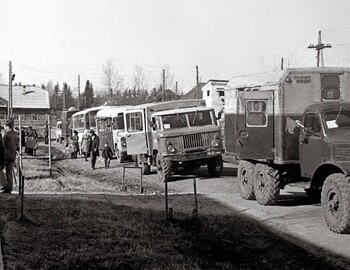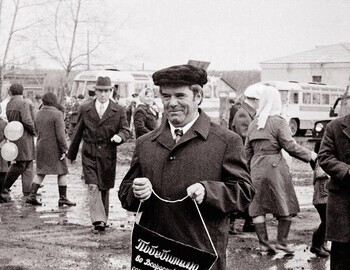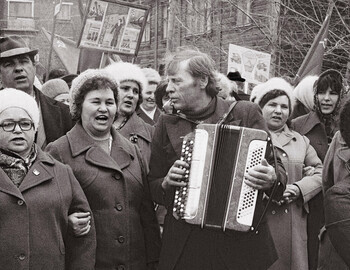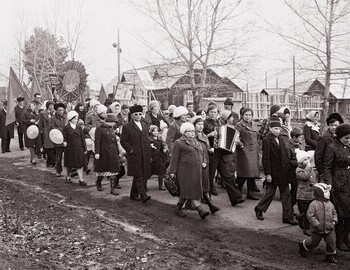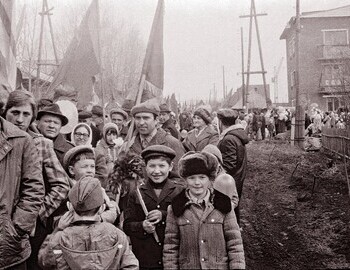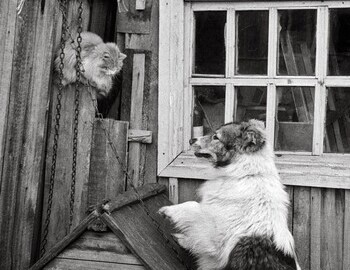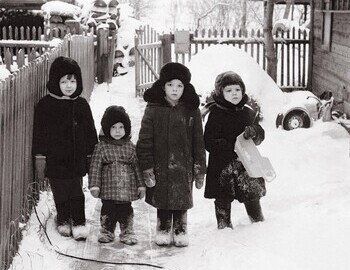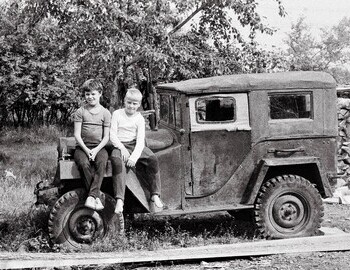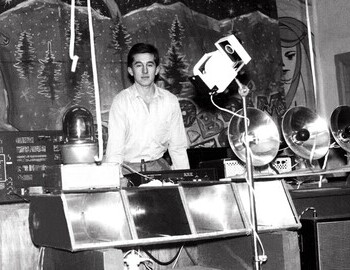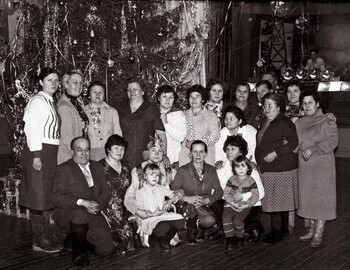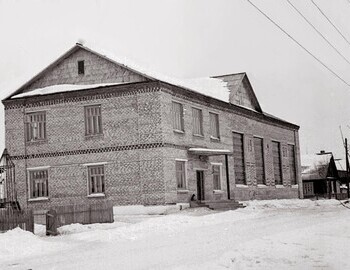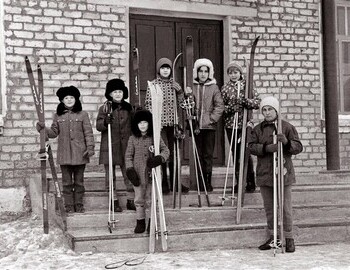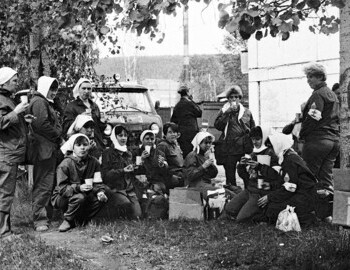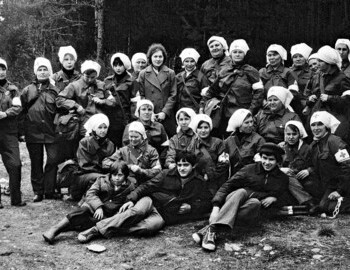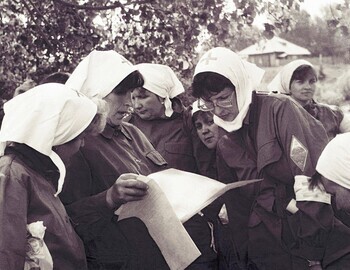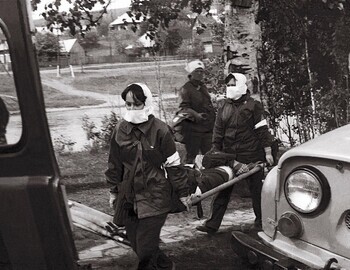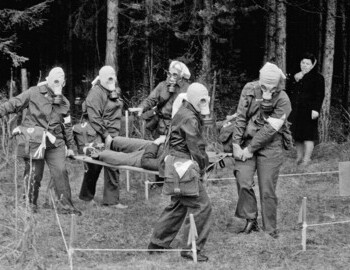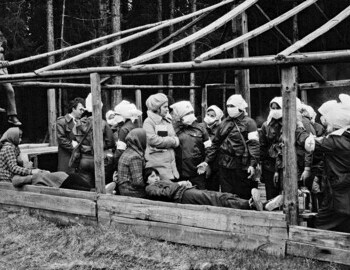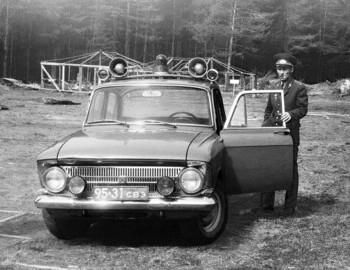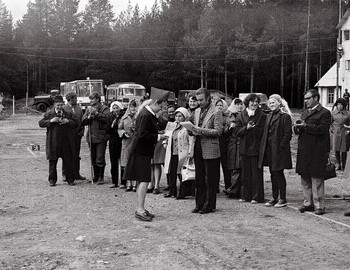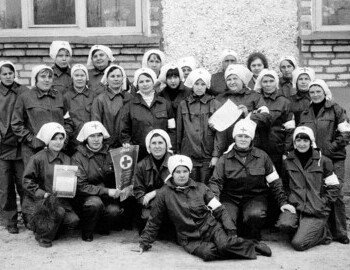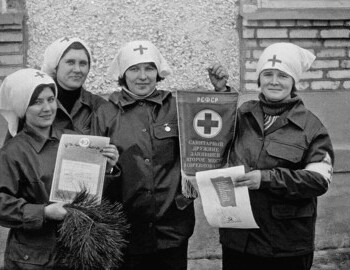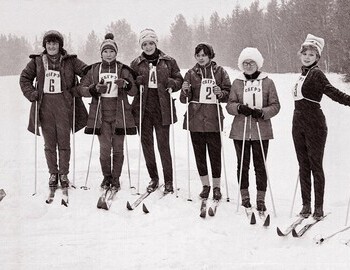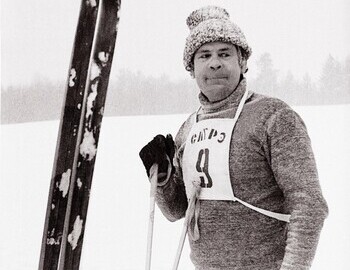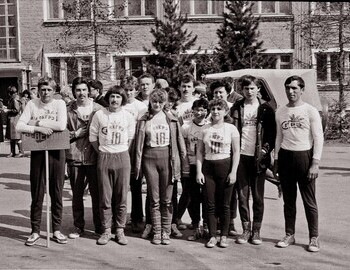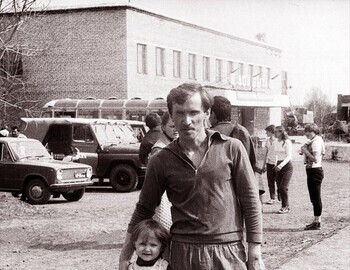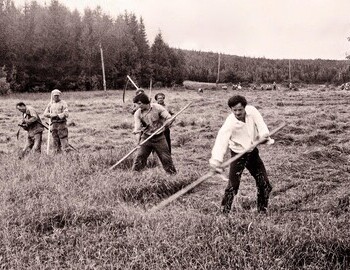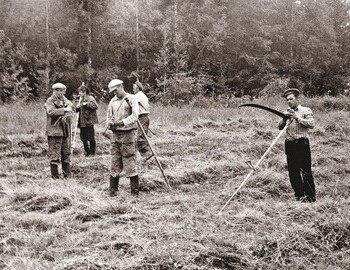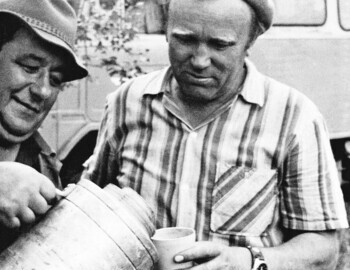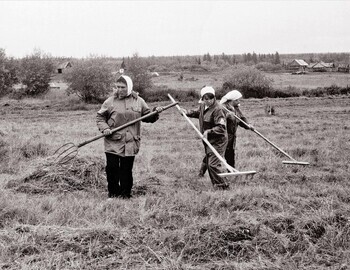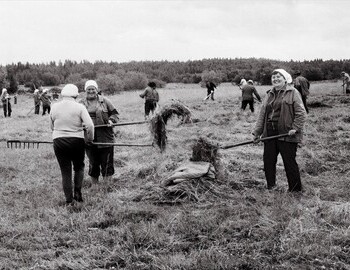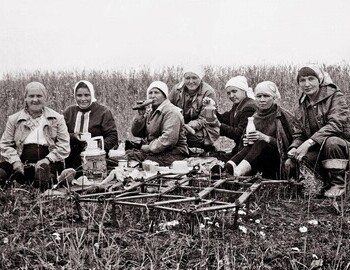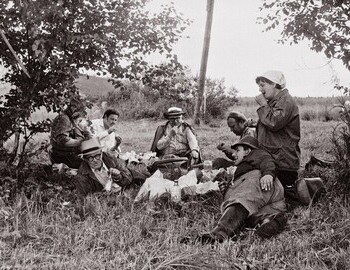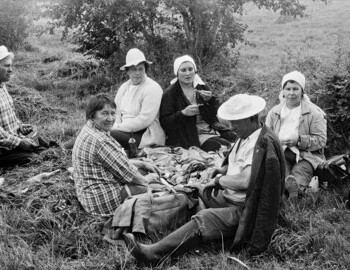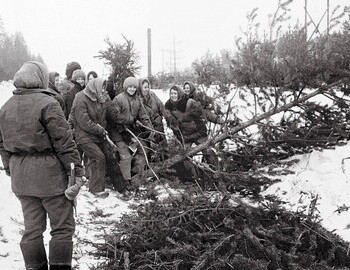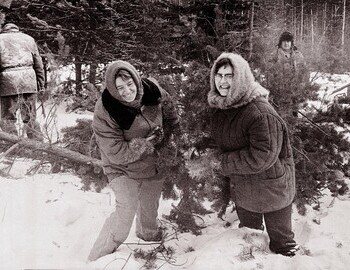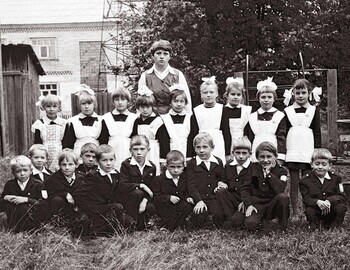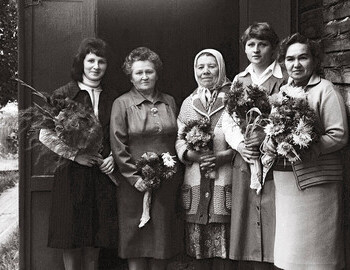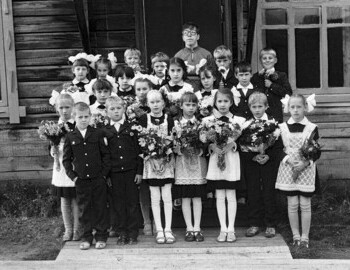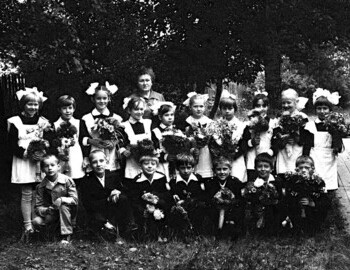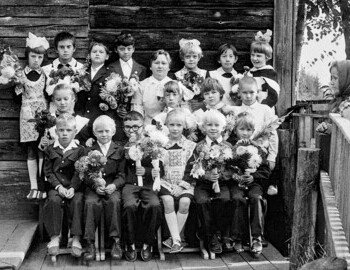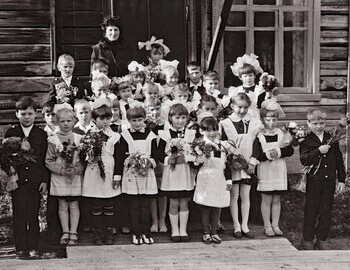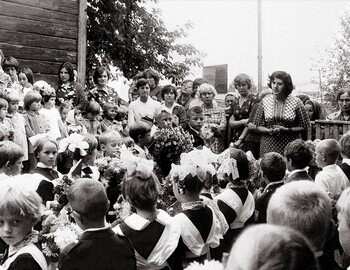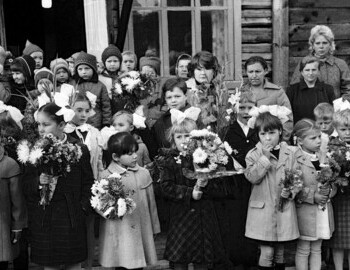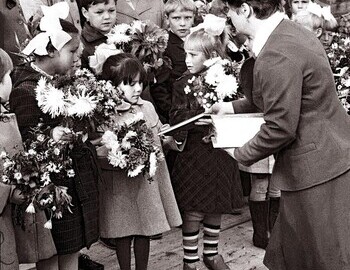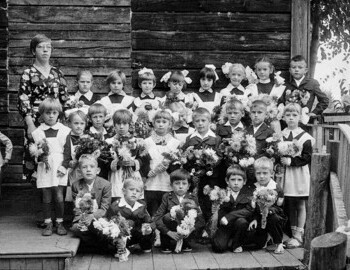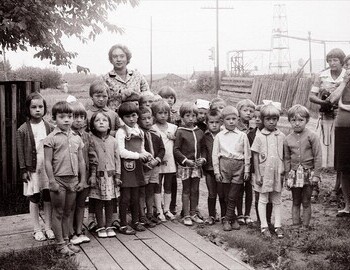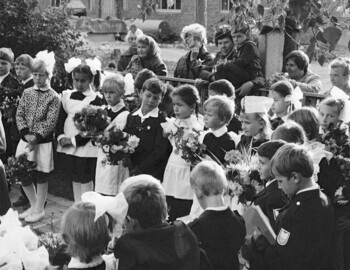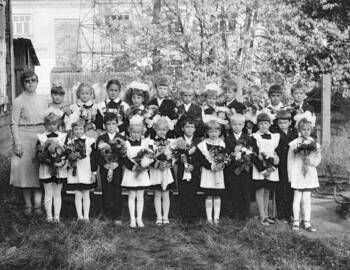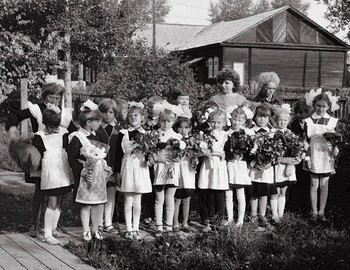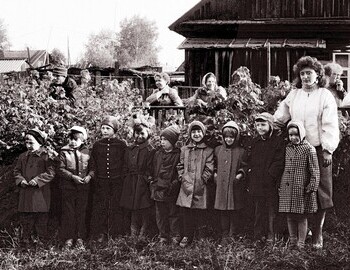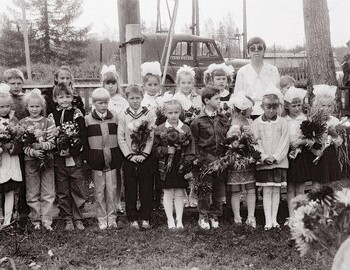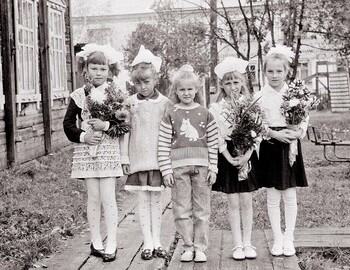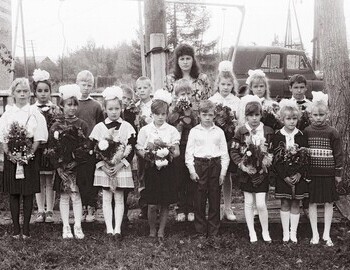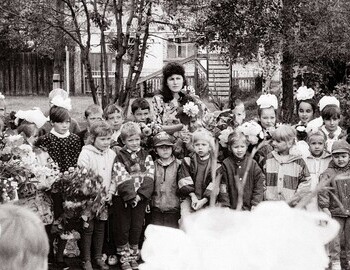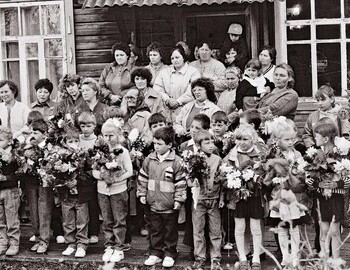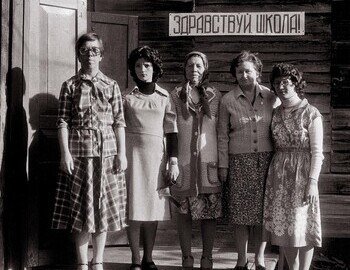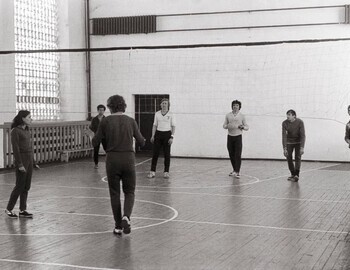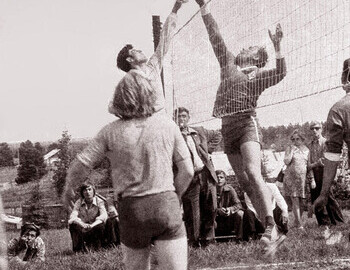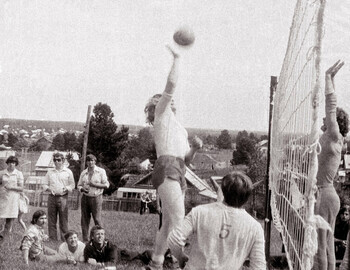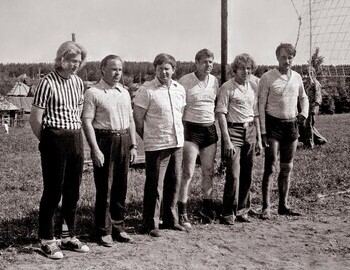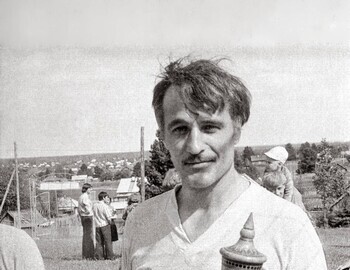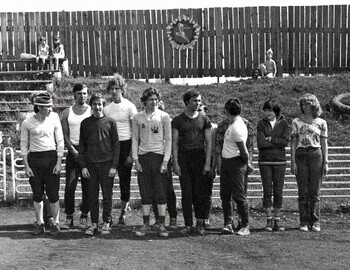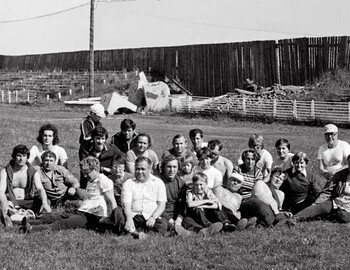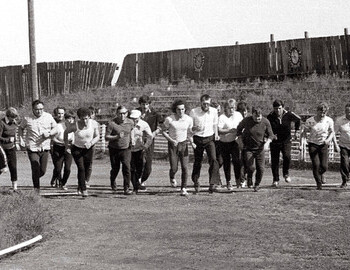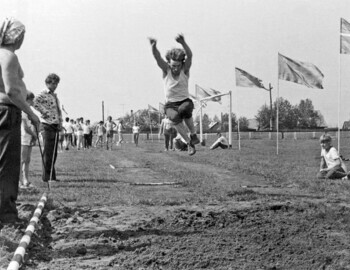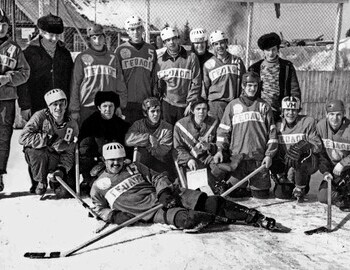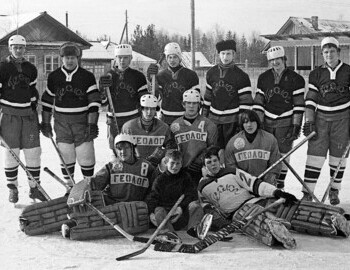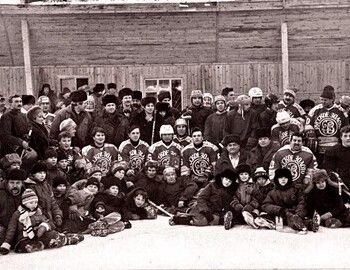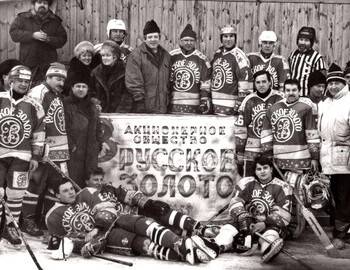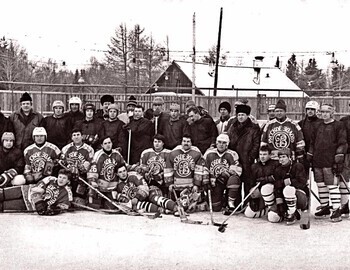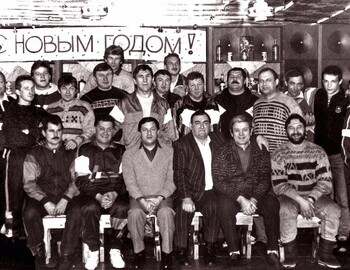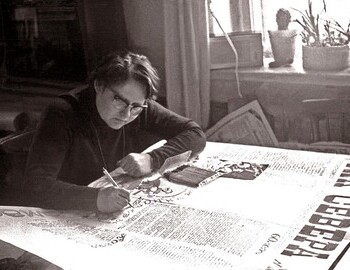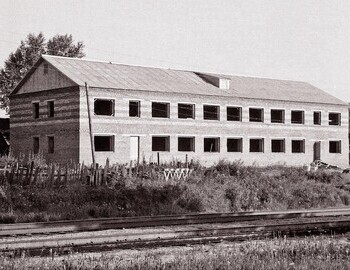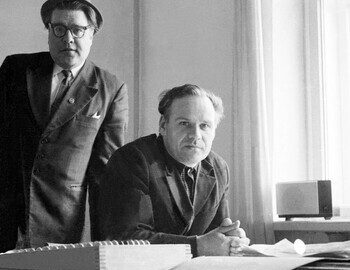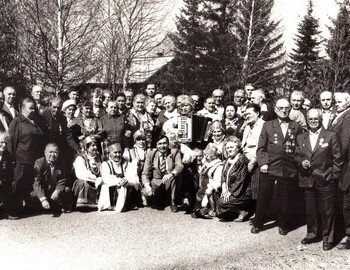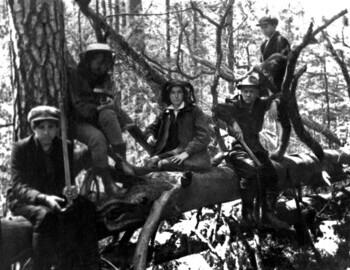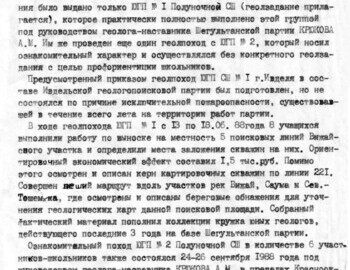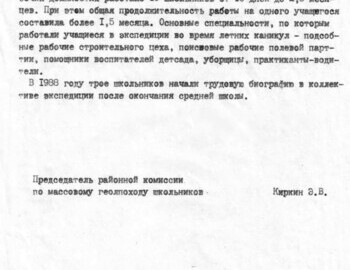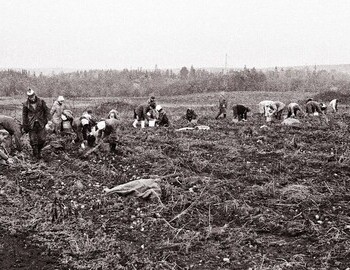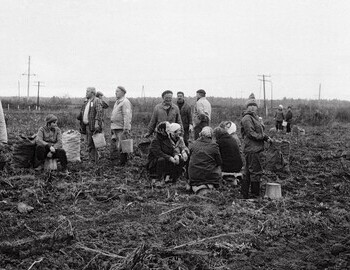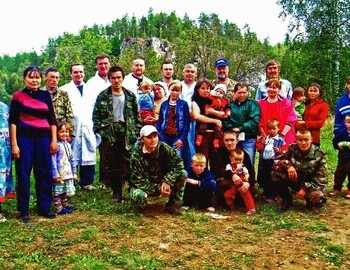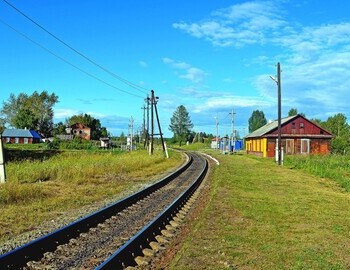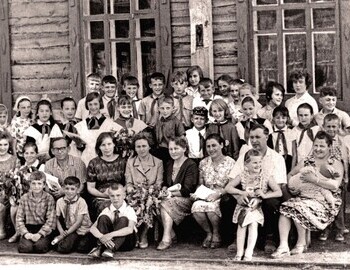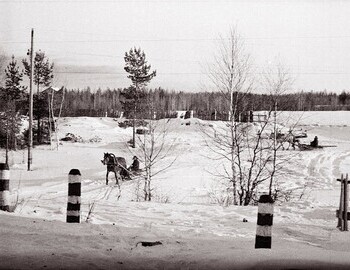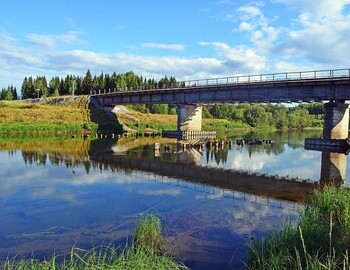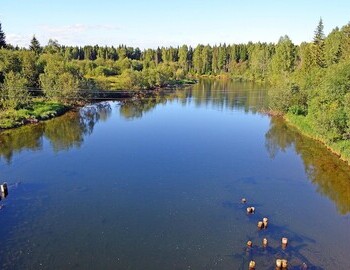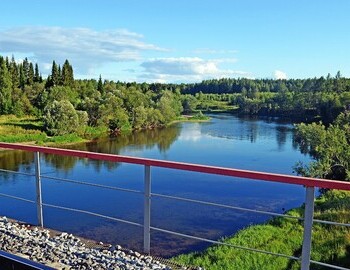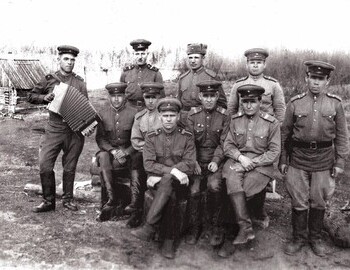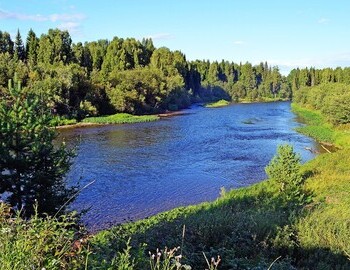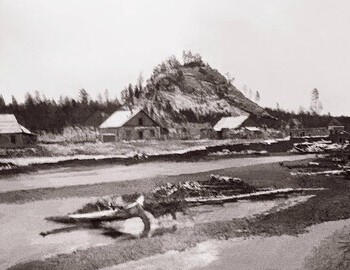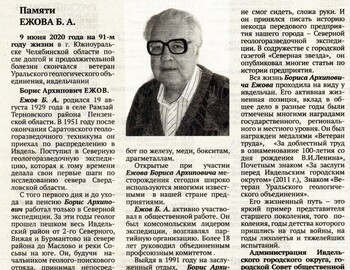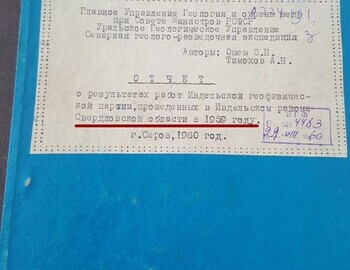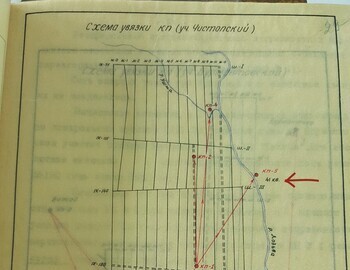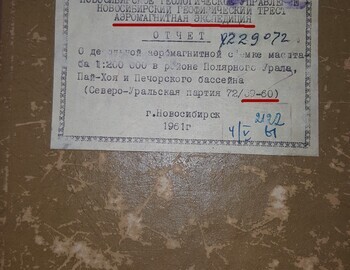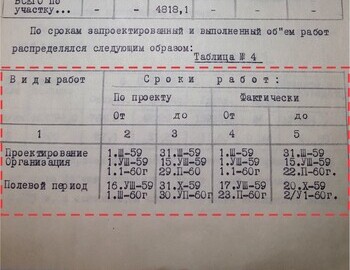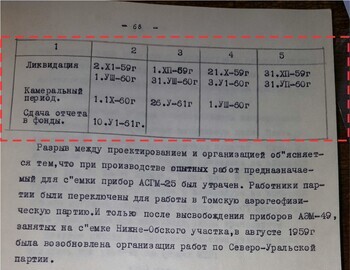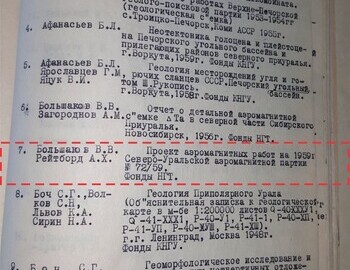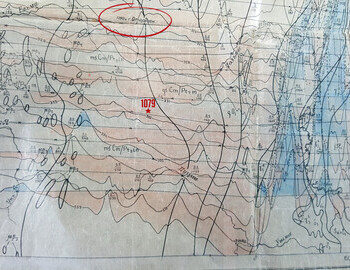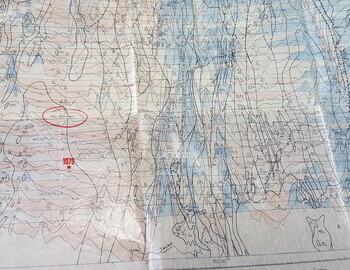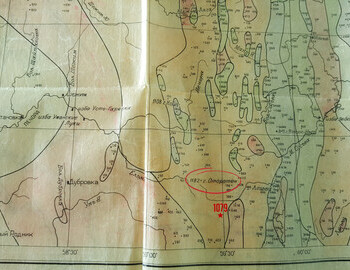
Northern Geological Expedition
As Boris Arhipovich Yezhov wrote in his article "There was such a village" ("Severnaya Zvezda", №28 from July 14, 2006), the emergence of this settlement was associated with the discovery of bauxite by geologists in an area located 18 km to the north from the previously discovered Toshemskoe bauxite deposit. This discovery, as it was then accepted, was timed to coincide with the 19th Congress of the CPSU, which opened in October 1952, the first congress in the post-war period. From the author: "... Further developments led us to the conclusion that the site is promising, and further work must be continued at an accelerated pace, and for this it is necessary to carry out work all year round, and not seasonally. This means that it is necessary to build a settlement. Miners become carpenters and lay the first house in the central part of the future field, on the bank of a small river Tosemya, a tributary of the Toshemka River. By the spring, the first dwelling house was ready. During the winter, lumber, window frames, door leaves and other joinery, glass, nails, staples, bricks, sand and much more needed for construction were brought along the winter road. The arriving brigades started the construction of several objects: stables, baths, bakery and a residential building. Timber for construction was taken right there, when clearing a place for construction. In the summer, the miners continued work on de-coding the area. And the builders were building the settlement at an accelerated pace. In 2 years, 10 two- and four-apartment houses, two dormitories, a shop, an office, a club, a first-aid post, a workshop building. The construction of a log road to the Yuzhnaya Talitsa logging station with access to the Burmantovo - Ivdel road was started. However, in connection with the beginning of the construction of a dirt road in the village of 1st Northern - settlement Man-Tosemya, the construction of the ligne road was stopped. At the beginning of 1954, the first well was drilled in the field. In August 1954, the second drilling rig was launched. The first drilling rig was headed by A.A. Ryzhkov, the second - by A.I. Hertseg, who previously worked as a shift foreman at A.A. Ryzhkov's drilling rig. In 1953-54, the chief of the detachment was I.A. Zasimtsev, and construction technician was I.D. Yanshin, who worked in this position until 1959, in 1954-55 A.S. Zotin worked as the head of the detachment. With the commissioning of the drilling rigs, the reservoir L.F. Miheeva was involved in the documentation of the core. Mining work remained in my jurisdiction: documentation of pits, processing of factual material, drawing up plans of sections and other purely geological work. The senior geologist of the party L.N. Knyazeva took over the methodological geological guidance of the detachment. In September 1954, a young specialist engineer-geologist S.D. Gazenko arrived in the detachment. In the middle of 1955, V.I. Yudin was appointed head of the detachment, and drilling technician S.D. Korneychuk as squad mechanic. In August 1955 S.D. Gazenko was appointed as a geologist of the detachment. At this time, the stable work of the drilling rigs is being established. The drilling crews carry out the drilling plan regularly. Simultaneously with the drilling of wells, the boring of pits, the construction of the settlement continues. them. ХІХ Party Congress: dwelling houses, warehouses are being built. It should be noted that construction is carried out from materials procured locally. Planks, beams are sawn on their own sawmill, window frames, door leaves are made in their own carpentry workshop. A small smithy works in full force, providing construction workers with its work. Even the stoves in the houses, except for the first ones, are made of bricks of their own mini-factory. Lime was burned on site ... In the period 1959 - 1962. extensive prospecting work was carried out for high-quality bauxite in the areas of the deposits named after the 19th Party Congress and North-Toshemsky, and new ones that could be identified in the process of work. In this regard, the number of drilling rigs was increased first to 4, and then to 6. A new mechanical workshop and garage were built.
- 2 -
Both technical and geological personnel increased: the party's technical manager was S.V. Krasnykh, mechanics T.A. Sagadeev, V.A. Yakubovskiy, S.D. Gazenko became the senior geologist of the party, the technicians-geologists M.M. Pinyagina, O.A. Ivchenko, A.G. Murga, N.A. Kalivin, N.V. Buznakova, N.I. Zaitsev, R.F. Zaitseva, hydrogeologist R.Z. Gatina, geologists E.V. Kirkin, O.P. Popov, logging technicians I V.Gagarin and Y.M. Mikailik, topographers A.I. Maksimov, M.F. Popova, I.I. Ushakov, planner F.M. Zhiltsov and others. It had its own accounting department, planning department, personnel department ... Communication with the expedition was carried out using a radio station. A.I. Kozhushko worked as a radio operator for a long time. In 1959, the leadership of the party was changed, I.N. Petrov was appointed chief, and in 1960, before the end of field work, V.O. Luzan. The senior geologist of the party from 1960 to 1963 was S.G. Strulyov. Cameral work was carried out under the supervision of senior geologist S.G. Strulyov, who also wrote most of the sections of the report. Drilling crews worked on exploration of the field and fulfillment of all geological tasks: A.A. Ryzhkov, A.I. Gertseg, N.A. Asanov, V.I. Filyukov, F.F. Veber, N.P. Kapustingov, D.A. Pika, H.Y. Urazbahtin, P.M. Ovechkin, N.N. Zaharov, I.V. Gerts, V.N. Kazankin, A.I. Malyavkin. Drillers Y.D. Miheev, E.A. Kalganov, M.N. Kolyadin, V.I. Kupriyanov, N.S. Tsukanov, A.T. Rafikov, M.M. Shahbazov and many others. In 1963, in June, a geological report was completed and submitted for the period of work from 1952 to 1962. According to the results obtained, it was necessary to continue work on the area from the field named after the 19th Party Congress (in the north) to the North-Toshemskoye field (in the south). The work done could be considered only as an initial stage (which was confirmed by the newly started work in the 70s). But at the top it was considered that at the moment the work carried out is sufficient for a geological assessment of this bauxite-bearing area. The work was stopped. The workers were transferred to other parties: mainly to the newly formed Burmantovskaya party (although a new settlement was being built in the village of Vizhay) to the 3rd Northern party and to the Langur party. Many went to work in other industries altogether. The settlement named after the 19th Party Congress existed for 10 years, for many it was dear. A lot of effort was invested in its construction and improvement. Many found their family happiness here by starting a family. Within a year, not a trace remained of the village. This could end the story. But I would like to dwell separately on how we lived in the village called 19th Party Congress. The construction of housing and other social facilities was started in the first place. The arriving workers, as they say, had a "roof over their heads". Although the construction was carried out on a temporary basis, it was of good quality. From the very first days, a measured life began in the village. Many began to start small vegetable gardens where they grew greens: onions, carrots, beets, and then potatoes, which, by the way, gave a good harvest. There were a lot of young people in the village, and we, families, did not separate ourselves from the young. All together participated in amateur performances, staged performances, concerts, held dancing and various other evenings on their own. Lectures were given in the club, films were shown. All took an active part in subbotniks and other local events. In winter, skiing was very popular - competitions were held for the championship of the party, and some comrades took part in competitions for the championship of the expedition. In the summer - playing volleyball and football, chess. In the rivers Tosemya, Toshemka and Vizhay there were a lot of fish (grayling, taimen, burbot), in the forest there were game: hazel grouse, kosach, wood grouse, from animals: hares, squirrels, sable, foxes, elks and bears were found. Fans could indulge their free time fishing and taking their chance with a rod by the river, and hunters were wandering through the taiga with their guns. Farm lovers acquired cows, goats, kept rabbits, pigs and chickens. In the summer they gathered mushrooms, currants, raspberries: in the fall - lingonberries, harvested pine nuts.
In general, life was good: there was plenty of work, one could easily make friends, families were close, young people fell in love, wed and started families on their own, there were birthdays parties and playgrounds full of children. In 1959 the lack of school became a problem. The issue was discussed for a long time, but it was solved in the simplest way. During the year, a small school for two classes was built. The school was built by almost the entire village. In the beginning (first year) there was one teacher - Maria Andreevna Gagarina, the wife of the head of the logging team. The second year required a second teacher. And the classes were held in two shifts. In 1960, our daughter was born, and in 1961, our son, Alexander, began his educational path at this school. Until 1958, summer impassibility was a big hindrance, both in the work of the party and in life. All cargo was transported in winter or summer for a long time and painfully by tractors. There were difficult moments in the life of the collective, but people lived a happy life. They realized that they were doing an important job and that the country needed them. Sometimes memories will roll over and you think - "and how did we endure all the hardships?", veteran of the Northern Geological Exploration Expedition.
Photos from Boris Arhipovich Yezhov archive, Ivdel Historical and Ethnographic Museum.
Как писал Ежов Б.А. в своей статье "Был такой посёлок" ("Северная звезда", № 28 от 14 июля 2006г.), возникновение этого населённого пункта было связано с открытием геологами бокситов на участке, расположенном в 18 км к северу от ранее открытого Тошемского месторождения бокситов. Это открытие, как тогда было принято, было приурочено к открывавшемуся в октябре 1952 года ХІХ съезду КПСС - первому съезду в послевоенный период. Далее слово автору: "...Дальнейшие разработки отряда позволили прийти к выводу: участок перспективный, и дальнейшие работы надо продолжать ускоренными темпами, а для этого необходимо работу вести круглогодично, а не сезонно. Значит, надо строить посёлок. В ноябре 1952г. забойщики становятся плотниками и закладывают первый дом в центральной части будущего месторождения, на берегу небольшой речки Тосемья, притоке реки Тошемки. К весне первый жилой дом был готов. За зиму по зимнику были завезены пиломатериалы, оконные рамы, дверные полотна и другие столярные изделия, стекло, гвозди, скобы, кирпич, песок и многое другое, необходимое при строительстве. Прибывшие бригады приступили к строительству нескольких объектов: конюшни, бани, пекарни и жилого дома. Лес для строительства брался тут же, при расчистке место под строительство. В летний период забойщики продолжили работу по расшуфровке площади. А строители ускоренными темпами строили посёлок. За 2 года было построено 10 двух- и четырёхквартирных дома, два общежития, магазин, контора, клуб, медпункт, здание мастерской. Было начато строительство лежнёвой дороги до лесопункта Южная Талица с выходом на дорогу Бурмантово - Ивдель. Однако, в связи с началом строительства грунтовой дороги пос. 1-ый Северный - пос. Мань-Тосемья, строительство лежнёвой дороги прекратили. В начале 1954г. на месторождении была забурена первая скважина. В августе 1954г. пущена вторая буровая. Первой буровой руководил А.А. Рыжков, второй - А.И. Герцег, ранее работавший сменным мастером на буровой А.А. Рыжкова. В 1953-54 годах начальником отряда был И. А. Засимцев, техником-строителем - И.Д. Яншин, который проработал в этой должности до 1959г., в 1954-55гг. начальником отряда работал А.С. Зотин. С вводом в работу буровых, документацией керна занималась коллектор Л.Ф. Михеева. В моём ведении остались горные работы: документация шурфов, обработка фактического материала, составление планов разрезов и другие, чисто геологические работы. Методическое геологическое руководство по отряду взяла на себя старший геолог партии Л.Н. Князева. В сентябре 1954 года в отряд прибыл молодой специалист инженер-геолог С.Д. Газенко. В середине 1955 года начальником отряда назначается В.И. Юдин, механиком отряда - С.Д. Корнейчук, техник-буровик. В августе 1955г. С.Д. Газенко назначается геологом отряда. В это время налаживается стабильная работа буровых. Буровые бригады выполняют регулярно план по бурению. Одновременно с бурением скважин, проходкой шурфов, продолжается и строительство пос. им. ХІХ партсъезда: строятся жилые дома, складские помещения. Необходимо отметить, что строительство ведётся из материалов, заготовленных на месте. Доска, брус пилится на своей пилораме, оконные рамы, дверные полотна изготавливаются в своей столярной мастерской. В полную силу работает небольшая кузница, обеспечивающая своей работой строителей. Даже печи в домах, кроме первых, сложены из кирпича своего мини-заводика. На месте обжигали известь... В период 1959 - 1962гг. проводились широкие поисковые работы на высококачественные бокситы на площадях месторождений имени ХІХ партсъезда и Северо-Тошемского, так и новых, которые могли быть выявлены в процессе работ. В связи с этим количество буровых было увеличено сначала до 4-х, а затем до 6-ти. Была построена новая механическая мастерская и гараж.
- 2 -
Увеличился как технический, так и геологический персонал: техруком партии был С.В. Красных, механиками Т.А. Сагадеев, В.А. Якубовский, старшим геологом партии стал С.Д. Газенко, прибыли техники-геологи М.М.Пинягина, О.А. Ивченко, А.Г. Мурга, Н.А. Каливин, Н.В. Бузнакова, Н.И. Зайцев, Р.Ф. Зайцева, гидрогеолог Р.З. Гатина, геологи Э.В. Киркин, О.П. Попов, техники-каротажники И.В. Гагарин и Я.М. Микайлик, топографы А.И. Максимов, М.Ф. Попова, И.И. Ушаков, плановик-нормировщик Ф.М. Жильцов и др. Имелась своя бухгалтерия, плановый отдел, отдел кадров. Связь с экспедицией осуществлялась с помощью радиостанции. Радистом длительное время работал работал А.И. Кожушко. В 1959г. меняется руководство партии, начальником назначается И.Н. Петров, а в 1960-ом, до окончания полевых работ, В.О. Лузан. Старшим геологом партии с 1960 по 1963г. был С.Г. Струлёв. Камеральные работы проводились под руководством старшего геолога С.Г. Струлёва, им же написано большинство разделов отчёта. На разведке месторождения и выполнении всех поставленных геологических задач работали буровые бригады: А.А. Рыжкова, А.И. Герцега, Н.А. Асанова, В.И. Филюкова, Ф.Ф. Вебера, Н.П. Капустинского, Д.А. Пика, Х.Я. Уразбахтина, П.М. Овечкина, Н.Н. Захарова, И.В. Герца, В.Н. Казанкина, А.И. Малявкина. Бурильщики Ю.Д. Михеев, Э.А. Калганов, М.Н. Колядин, В.И. Куприянов, Н.С. Цуканов, А.Т. Рафиков, М.М. Шахбазов и многие другие. В 1963 году, в июне, был закончен и сдан геологический отчёт за период работы с 1952 по 1962 годы. По полученным результатам необходимо было продолжить работы на площади от месторождения им. ХІХ партсъезда (на севере) до Северо-Тошемского месторождения (на юге). Проделанную работу можно было считать только как начальную стадию (что и было подтверждено вновь начатыми работами в 70-х годах). Но в верхах посчитали, что на данный момент проведённых работ достаточно для геологической оценки данной бокситоносной площади. Работы прекратили. Работников перевели в другие партии: в основном во вновь образованную Бурмантовскую партию (хотя новый посёлок строился в посёлке Вижай) в 3-ю Северную и в Лангурскую партии. Многие вообще перешли на работу в другие отрасли. Посёлок имени ХІХ партсъезда просуществовал 10 лет, для многих он был родным. Много сил было вложено в его строительство и благоустройство. Многие обрели здесь своё семейное счастье, создав семью. В течение года от посёлка не осталось и следа. На этом можно было бы закончить повествование. Но мне хочется отдельно остановится на том, как мы жили в посёлке им. ХІХ партсъезда. Строительство жилья и других социальных объектов было начато в первую очередь. Прибывающие работники, как говорится, имели "крышу над головой". Хотя строительство и велось хозспособом по временной схеме, но было добротное. С первых же дней началась размеренная жизнь в посёлке. Многие стали заводить небольшие огородики, где выращивали зелень: лук, морковь, свеклу, а затем и картофель, который, кстати, давал неплохой урожай. В посёлке было много молодёжи, да и мы, семейные, не отделяли себя от молодёжи. Все вместе участвовали в художественной самодеятельности, своими силами ставили спектакли, концерты, проводили танцевальные и различные другие вечера. В клубе читались лекции, демонстрировали кинофильмы. Все принимали активное участие в субботниках и других мероприятиях местного значения. Зимой большой популярностью пользовались лыжи - проводились соревнования на первенство партии, а отдельные товарищи участвовали в соревнованиях на первенство экспедиции. Летом - игра в волейбол и футбол, шахматы. В реках Тосемья, Тошемка и Вижай было много рыбы (хариус, таймень, налим), в лесу - дичи: рябчики, косачи, глухари, из зверей: зайцы, белка, соболь, лисы, встречались лоси и медведи. Любители рыбной ловли, а значит и ухи, в свободное время отводили душу с удочкой, а охотники проводили время, бродя по тайге с ружьём. Любители домашнего хозяйства обзаводились коровами, козами, держали кроликов, свиней и кур. Летом собирали грибы, смородину, малину: осенью - бруснику, заготавливали кедровые орехи.
В общем, жили полноценной жизнью: работали, дружили семьями, молодёжь влюблялась, играли свадьбы, отмечали дни рождения, рожали и воспитывали детей. Доказательствами последнего явилось то, что в 1959 году остро стал вопрос о том, где мы собираемся учить детей. Вопрос обсуждался долго, но был решён самым простым способом. За год была построена своя небольшая школа на два класса. Школу строили почти всем посёлком. Вначале (первый год) был один учитель - Мария Андреевна Гагарина, жена начальника каротажного отряда. На второй год потребовался потребовался второй учитель. И занятия проводились в две смены. В 1960 году у нас родилась дочь, а в 1961 году в этой школе начал свой образовательный путь и наш сын - Александр. Большой помехой, как в работе партии, так и в жизни, до 1958 года было летнее бездорожье. Все грузы завозились в зимний период или летом долго и мучительно тракторами. В жизни коллектива были и трудные моменты, но люди жили счастливой жизнью. Они сознавали, что делают важное дело, и нужны стране. Порой накатят воспоминания и думаешь - "и как же это мы все невзгоды переносили?", это, наверное, потому, что мы дети войны, трудности нас закалили и были молоды, да и жили мы надеждой в лучшую жизнь!". Б. Ежов, ветеран Северной геолого-разведочной экспедиции.
Фото из архива Ежова Бориса Архиповича. Фонд Ивдельского историко-этнографического музея.
Northern Geological Expedition
The Ural Mountains are part of a highly developed industrial complex closely tied to the mineral-rich Siberian region and are the home of peoples with roots reaching deep into history. Beside the logging and forestry, there are many mining shafts and explorations.
The 21st Congress of the Communist Party of the Soviet Union was held from January 27 to February 5, 1959. It was a mid-term congress, timed so that Khrushchev could try to consolidate his power over rivals after the attempted coup of the Anti-Party Group in 1957. We know that the Dyatlov group dedicated their trek to the congress. The fact is even mentioned in their “Evening Otorten №1”. Similar tributes were very popular at the time. The Northern Geological Expedition wanted to find ore and mineral deposits to glorify the Communist Party.
The most valuable resource was uranium. In case of checking a gamma anomaly, given the limited capabilities, the works might be done with a method borrowed from the practice of the leasing system of excavation of the radioactive ore by the MVD of the USSR in 1945-48, “The works were conducted in the most primitive way – by manual short-hole drilling. Next, blasting out, collecting and sifting the chlopinite – a pitch-black uranium containing mineral. Antimagnetic anti-tank mines weighing up to 5 kg were used as explosives.”
Hamza Fazylovich Syunikaev participated in the search. In 1959 he was a cadet of the division team in military unit 6602 (Ivdel). He remembers the cannonade of explosions that were so loud they had to send a request to Moscow to stop the blasting so they could work. The distance in his approximation was not more than 10 km from the search base camp, and the blasts were on the northern side of the ridge, on the side of the cedar tree. The searchers couldn’t stand it even though a mountain separated them from the explosions. The distance between Otorten and Dyatlov Pass is 13 km. The blasting was somewhere in between.
These maps show the magnetic anomaly lines along which the helicopters were flying in 1959.
Aeromagnetic survey reports and maps from 1959
№№7-8 This report is kept at the Russian Federal Geological Fund. On its basis, we make assumptions about the detection of the anomaly from the air, ground work, etc. This is our primary documentary source. The network of horizontal lines in these diagrams are actual aerial survey routes and their numbers. That is, airplanes flew along these lines.
| 1. | Cover of the report on the geophysical work carried out in 1959 in the area of the Dyatlov group route. |
| 2. | Scheme with checkpoints for geophysical surveys in 1959, including District 41 |
| 3. | Cover of aeromagnetic survey reports 1959-60, carried out in the area of height 1079. |
| 4. | Table 4. Planned and actual terms of work in 1959-60. |
| 5. | Table 4. Continued |
| 6. | Reference to the project of aeromagnetic work, which was originally planned to be carried out for only in 1959 |
| Results of actual measurements, including the area of height 1079, indicating the actual aircraft survey routes. | |
| 9. | Results of actual measurements, including the area of height 1079. |
№№7-8 Это отчет, хранится в Российском Федеральном Геологическом Фонде. На его основе мы делаем предположения об обнаружении аномалии с воздуха, наземных работах и т.д. Это наш основной документальный первоисточник. Сеть горизонтальных линий на этих схемах реальные маршруты аэросъемки и их номера. Т.е по этим линиям летали самолеты.
| 1. | Обложка отчета о геофизических работах, проводившихся в 1959 году в районе маршрута группы Дятлова. |
| 2. | Схема расположения контрольных пунктов, в т.ч. и в поселке 41 квартала в 1959 году. |
| 3. | Обложка отчета об аэромагнитной съемке 1959-60гг, проводившейся и в районе высоты 1079. |
| 4. | Таблица 4. Плановые и фактические сроки работ в 1959-60гг. |
| 5. | Таблица 4. Продолжение.) |
| 6. | Ссылка на проект аэромагнитных работ, которые первоначально планировалось провести в течение только одного, 1959-го, года. |
| Результаты фактических измерений, в т.ч. и в районе высоты 1079 с указанием реальных маршрутов аэросъемки, по которым летали самолеты. | |
| 9. | Результаты фактических измерений, в т.ч. и в районе высоты 1079. |



